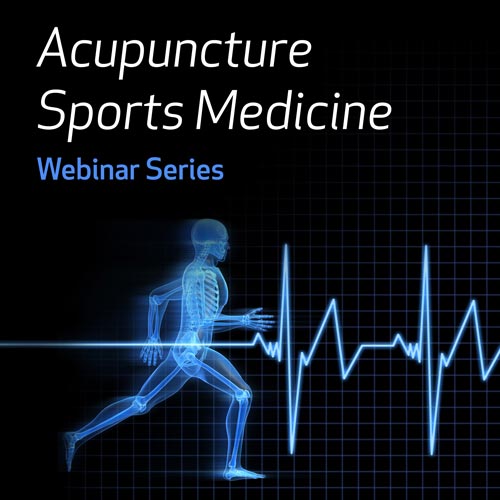Acupuncture Treatment of the Hamstring Muscle Group
Introduction
Hamstring strain is a common injury to all athletes and active individuals, including runners, hikers, and jumpers. It is not uncommon in team sports such as American football, soccer, and basketball. Athlete patients with minor to moderate hamstring strain often turn to acupuncture for treatment, and with proper assessment and the right techniques, the injury may respond well to the techniques that follow. With precise needling and the inclusion of complementary therapies, acupuncture offers a modality that should be considered during treatment and rehabilitation of the injury.
Discussion
Hamstring strain is the most commonly injured muscle of the hip and midsection of the body.[i] Acute hamstring injury is usually of sudden onset, and pain is felt in the posterior thigh. The patient may report hearing a “popping” noise or feeling a “tearing” sensation. Pain may be experienced anywhere along the hamstring, from the origin in the pelvis to its insertions at the posterior knee. In addition, spasm and stiffness of the entire muscle group may occur. The patient may even have an abnormal gait during walking, running, or climbing stairs. In these acute cases, pain may be accompanied by bruising and swelling. The biceps femoris, on the lateral aspect of the hamstring group, is the most common site of injury.[ii] However, strain can also occur to the semi-membranosus or the semi-tendinosus muscles on the medial side.
With an acute trauma, the patient usually knows immediately they have been injured. They have probably been doing some activity involving rapid acceleration and/or deceleration, such as sprinting, running hills, jumping, or sudden bursts of speed. I have even seen numerous cases of acute hamstring strain from over-stretching the thigh in a vigorous yoga posture.
Mild chronic hamstring pain and stiffness may present differently. It usually is of insidious onset. Some patients have mild chronic hamstring pathology from repeated overuse, considered a repetitive stress injury. Here, the pain is in the same location of the posterior thigh but probably less severe, and there may be little to no bruising or swelling.
Diagnosis and Assessment
To confirm the diagnosis, palpate the posterior thigh along the entire course of the hamstring group, from the ischial tuberosity to the region of the popliteal fossa. Painful points, as well as tightness, will be obvious. The three major muscles of the hamstring group originate at the ischial tuberosity of the pelvis, in the region of Bl 36 Chengfu. The short head of the biceps femoris, however, originates from the lower outer portion of the femur bone itself. All of these muscles cross the knee joint to their inferior attachments. The semimembranosus and the semitendinosus insert into the medial aspect of the tibia near Kid 10 Yingu. The biceps femoris inserts at the head of the fibula on the lateral side. The belly of the muscle is in the general region of Bl 37 Yinmen, and is commonly point-sensitive, regardless of the site of the actual muscle injury.
After palpation, the practitioner may consider testing the patient’s range of motion. In the supine (face up) position, lift the leg until the patient reports pain or stiffness in the posterior thigh. This is like performing the straight leg test. The angle off the table during the stretch (passive hip flexion) should be noted. It is also important to test the hamstrings with resisted flexion of the knee. Simply have them flex the knee while you resist the movement with your hand on their heel. If this causes pain, the hamstring group is probably involved. With a Grade I or moderate Grade II injury, the muscle fibers are stretched or only moderately torn. These are great cases for the acupuncturist, and you should feel confident with the treatments described below.
A Grade III injury is serious, as the hamstring muscle ranges from a 75 percent tear to a 100 percent rupture. If pain and other symptoms are severe, and you are able to palpate a depression in the muscle, immediately refer the patient for further orthopedic evaluation. While acupuncture might be a reasonable complementary treatment, immobilization or surgery may be required.
The practitioner must clearly differentiate a hamstring strain from other similar injuries and conditions. Pain referred from the lumbar spine, the sacral-iliac joint, or the gluteal region may pass through the posterior thigh and mimic hamstring injury. Contusion due to a direct blow or strike to the area should not be confused with the secondary tissue edema of a muscle strain. Ischial bursitis will present with pain at or above the attachment of the hamstring tendon at the ischium. And finally, hamstring tendonitis at the attachments in the knee may be related to muscle strain, but is a different condition requiring other techniques.
Acupuncture Treatment Summary
Hamstring strain is most commonly diagnosed under the category of accident/trauma. The injury is at the level of the muscles and tendons, with qi and blood stagnation in the channels and collaterals. Hamstring strain is clearly Bladder meridian Taiyang pathology, although the Kidney meridian may also be involved. Occasionally, strain and muscle tightness may be a repetitive stress disorder due to the accumulation of micro-trauma. Both cases are treated with similar points and techniques.
Internal organ imbalances of the Bladder and Kidney are not necessarily related. It may be more likely to see Liver dysfunction, as it fails to control the muscles and tendons.
Treat twice a week for three weeks, then re-evaluate. Most cases without complications have good results within six treatments. A simple strain may take only several treatments for significant improvement. With chronic cases, continue treatment at least once weekly after the first three-week period. Therapeutic exercise may also be necessary in this rehabilitation stage of treatment.
The Four Steps Approach
The following are points and techniques to consider in the treatment of the hamstring muscle, both acute and chronic cases. This protocol is organized into Four Steps, an approach that is useful in sports medicine acupuncture and is discussed in my book The Acupuncture Handbook of Sports Injuries and Pain. This four steps approach makes point selection and needle technique simple, logical and systematic, and it is both easy to understand and inclusive for acupuncturists from differing traditions and backgrounds.
Step One
Using points and techniques that may have an immediate effect on the patient, such as a decrease in pain or an increase in range of motion.
The Tendino-Muscle Meridians (Jin jing, Jin mai)
Bl 67 Zhiyin Bleeding technique
Bleeding the jing-well point should always be considered the first place to start, as it is often immediately effective for some of the symptoms (pain, stiffness, decreased range of motion).
Opposite Side (contra-lateral) Method
Corresponding ahshi points on the opposite (unaffected) side may be considered. After needle insertion, the patient performs active movement of the affected extremity. Carefully observe if an increase of range of motion is accomplished.
Step Two
Using meridian and microsystem points that are not located at the site of injury.
The Shu-Stream Point Combination
Bl 65 Shugu affected side + SI 3 Houxi opposite side
A very effective point combination utilizing upper/lower and right/left shu-stream points of the Taiyang channel. Electrical stimulation between these two points may be considered. This point combination should be considered a foundation distal treatment for most cases of hamstring pathology.
Other Traditional Point Categories
Palpation may assist in your choice of other meridian points. These Taiyang points are usually obvious to the practitioner for this injury.
Bl 57 Chengshan Distal point
Bl 58 Feiyang Luo-connecting point
Bl 59 Fuyang Xi-cleft point of the Yang Qiao mai
Bl 60 Kunlun Jing-river point
Bl 63 Jinmen Xi-cleft point
Microsystems: Auricular Therapy
Local: Between the hip and the knee (Chinese and French locations), plus lumbar spine
Systemic points for pain: Shen men, et al.
Step Three
Using points that benefit the qi, the blood, and the zangfu organs.
Strain of the hamstring muscle group is an acute injury and therefore internal organ imbalances are usually not a factor in treatment. However, as with all diagnosis and assessment, the practitioner may choose to treat zangfu imbalances of the patient.
Step Four
Using local and adjacent points at the site of injury.
The Hamstring Belly
Bl 37 Yinmen
Bl 37 is located 6 cun inferior to Bl 36, and is in the belly of the hamstring group. The actual point is located in a depression between the biceps femoris on the lateral side and the semimembranosus and the semitendinosus on the medial side. The sciatic nerve lies deep to the point. Bl 37 may be the first point to consider for hamstring strain and muscle tightness.
Palpation will reveal a tender zone that extends superior and inferior to the text location of Bl 37. This point-sensitive depression may be from one to three centimeters in length. Therefore, the practitioner may consider more than one needle at this site. On the average-sized patient, needle perpendicularly with a 2 to 3 inch needle to a depth of 1.5 to 2 inches. Be sure to insert into the depression between the taut palpable bands of the muscle, which lie both medially and laterally. Whether the pain is in the belly of the muscle or at the attachment at the ischial tuberocity, this point benefits most cases and it rarely aggravates. Consider electrical stimulation between the two paired points if used, with the exception of acute patients with significant pain, swelling, and contusion, where direct needling may need to be avoided.
Taut Bands of the Belly of the Hamstring – Medial and Lateral to the Taiyang line.
If treatment to the depression between the hamstring group at Bl 37 does not prove effective, consider treatment to ahshi points in the taut bands of the muscle itself. They can be found in the biceps femoris on the lateral side as well as in the semimembranosus and the semitendinosus muscles on the medial side. Use the depression at Bl 37 as the reference point (which is on the posterior centerline of the thigh). These points are important anatomical sites, and can be classified as follows:
1. Hamstring trigger points
This is described by Janet Travell, MD, in her work on myofascial pain syndrome. The trigger points of the biceps femoris generally are located lateral and inferior to Bl 37 (Denoted as the “X” in the illustration below). The trigger points of the two medial hamstring muscles are located medial and inferior to Bl 37. They too are denoted by the “X” in the illustration.
2. Motor points
There are also several motor points in the hamstring group in this region, as described by Matt Callison in The Motor Point Index.[i] They are located slightly superior to Bl 37 in both the medial and lateral muscle bellies. The motor points are denonted denoted by the triangles (diamonds) in the illustration.
Consider needling ahshi points in one or two of the most taut bands of the muscle. Perpendicular insertion from 1 to 1.5 inches usually suffices. Electrical stimulation can be used on paired points in these taut bands.
Sometimes, with muscle strain, there is specific point sensitivity due to a tear (strain) in the muscle tissue. Palpation will reveal specific point sensitivity. Treatment directly into this injured tissue is possible. However, the practitioner may need to avoid direct needling when these cases are acute.
The Hamstring Origin at the Ischial Tuberocity
Bl 36 Chengfu
Hamstring strain may affect the tendon at its attachment to the ischial tuberocity in the region of Bl 36. If Bl 36 is chosen for treatment, there are several reasonable techniques. A needle may be inserted at Bl 36, needled deeply towards the tendon. Care should be taken to avoid penetration of the tendon and its sheath; this may irritate and further inflame the tissue.
The Superior Muscle-tendon Junction
“Lower” Bl 36 – 1 to 2 cun inferior to Bl 36
The muscle-tendon junction is also a frequent injury site for the hamstring group. Some sources suggest that it is the most likely site for strain.[i] This zone is about 1 to 2 cun distal (inferior) to Bl 36, although it could extend a bit further. This “lower” Bl 36 point may be needled deeply into the muscle-tendon junction. It is located on the line along the Bladder Taiyang meridian. Avoid penetrating the adjacent sciatic nerve.
Conclusion
Hamstring strain along the Bladder meridian is a common injury, and one that may respond well to acupuncture. Local and adjacent points along the Taiyang channel, and slightly medial and lateral to it, are anatomically significant zones, including trigger points and the motor points. However, points “above and below” as well as distal points also contribute to successful treatment. In acupuncture sports medicine, techniques other than acupuncture should be considered, including manual therapy, guasha, and cupping. Complementary modalities such as therapeutic exercise may also be considered to assist the patient with a speedier recovery, as well as some of the rehabilitation techniques of physical therapy.
Other Courses By This Teacher
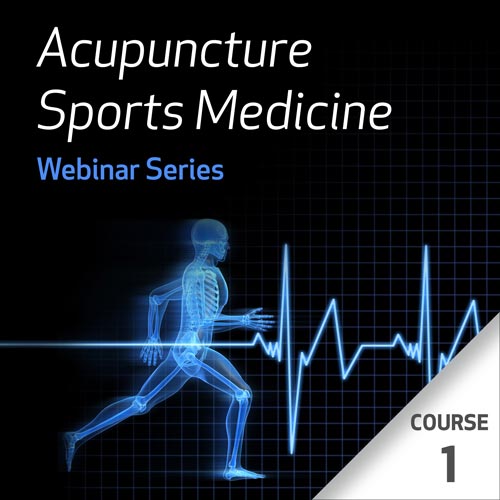

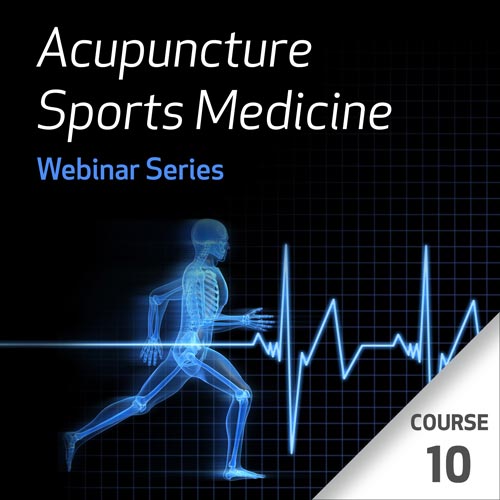

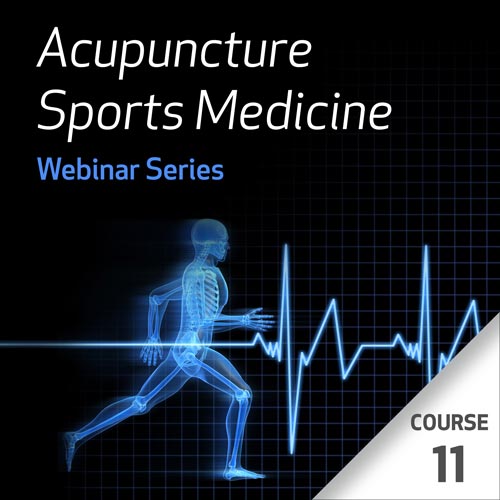

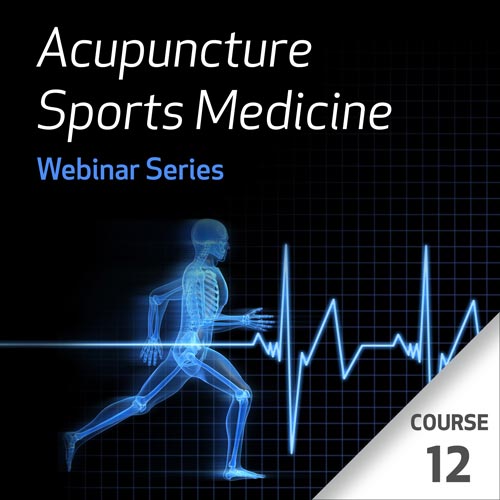

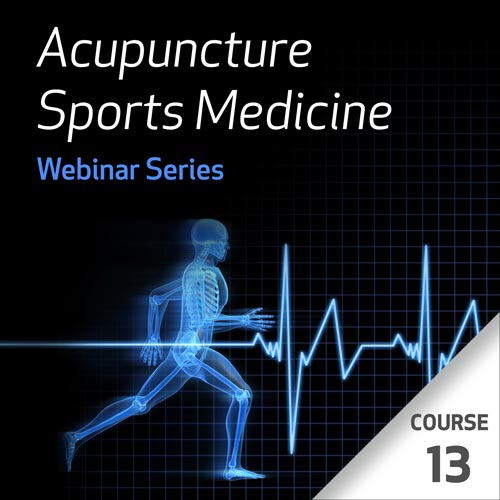

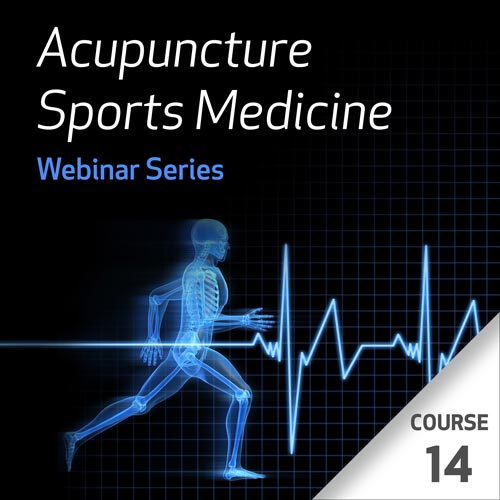

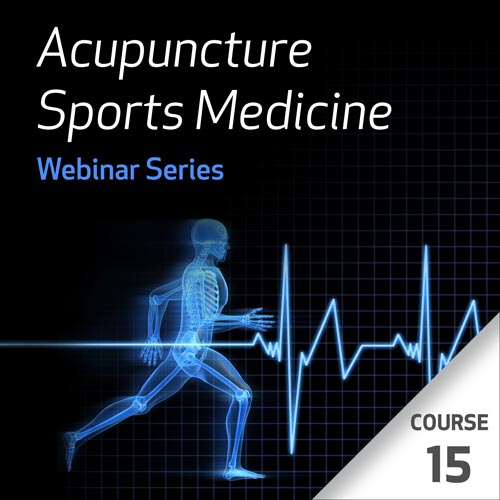

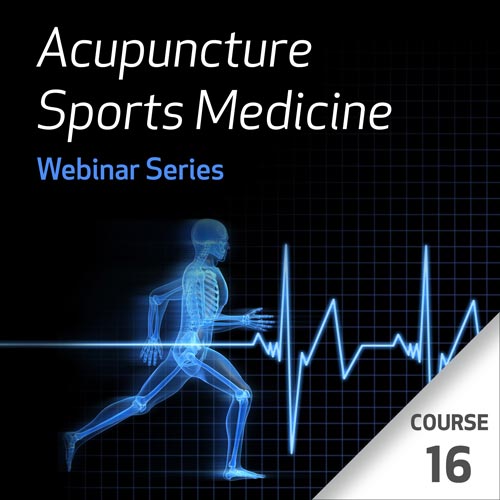



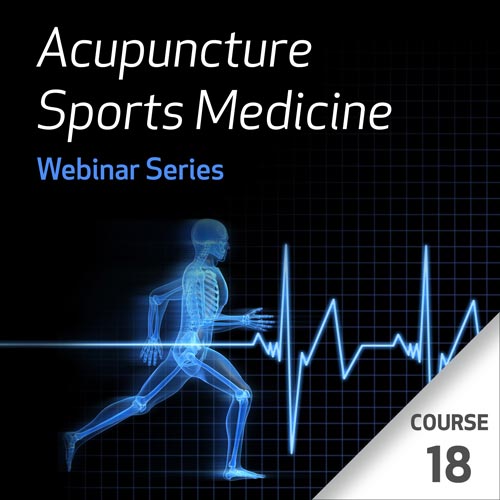

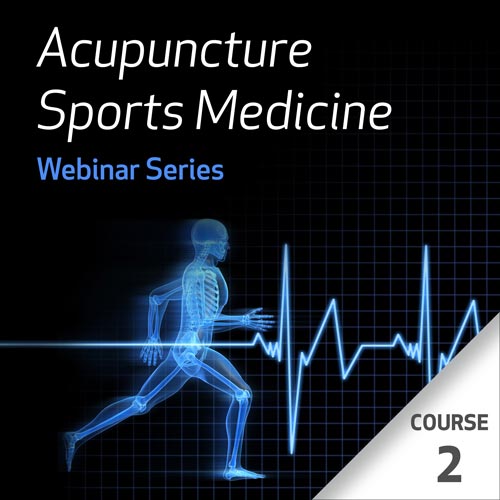

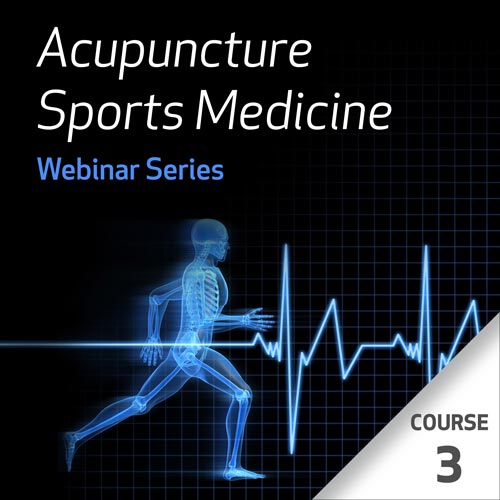

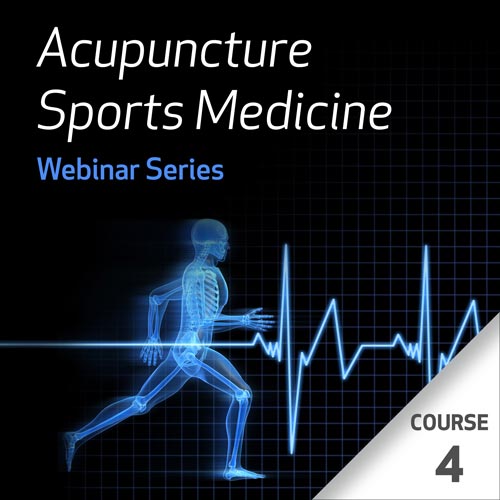

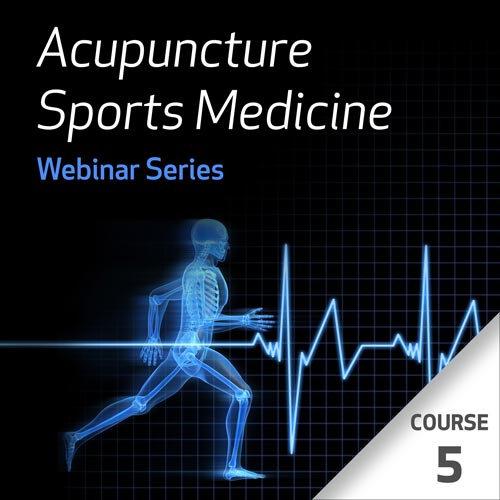

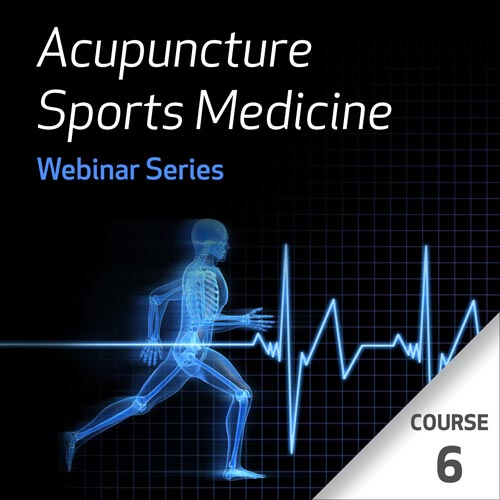

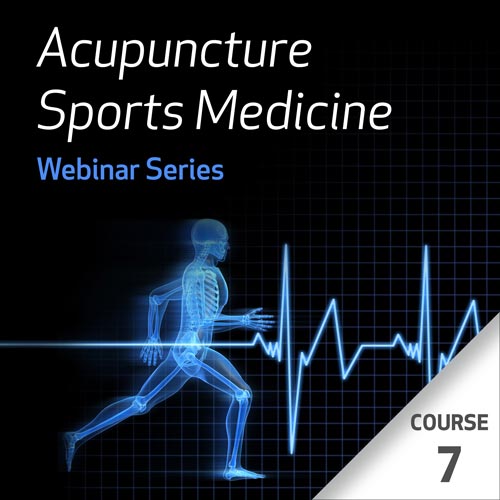

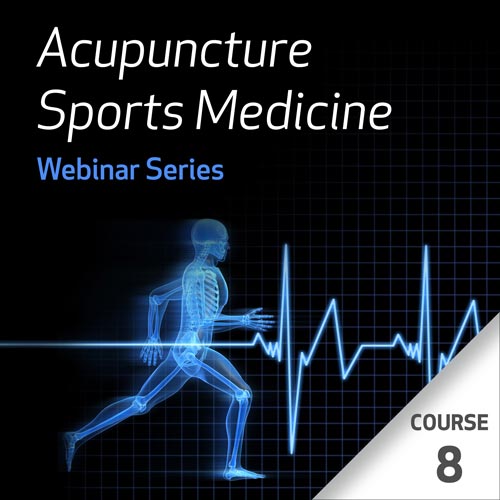

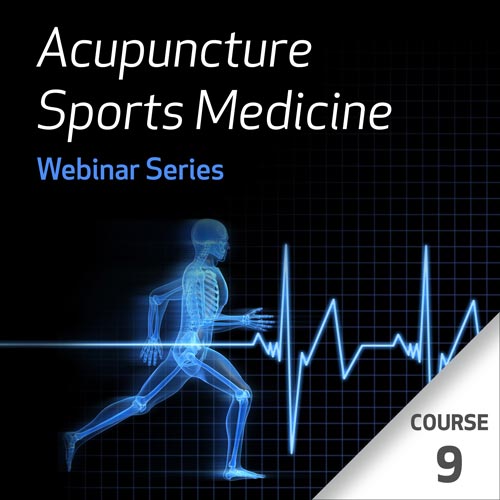

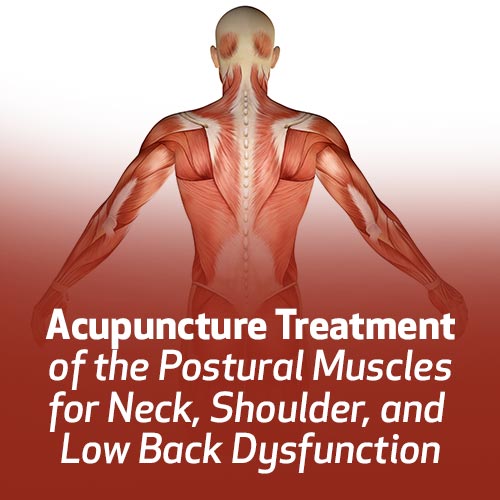

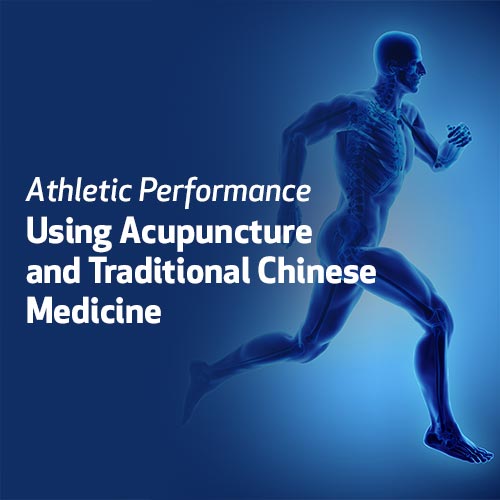

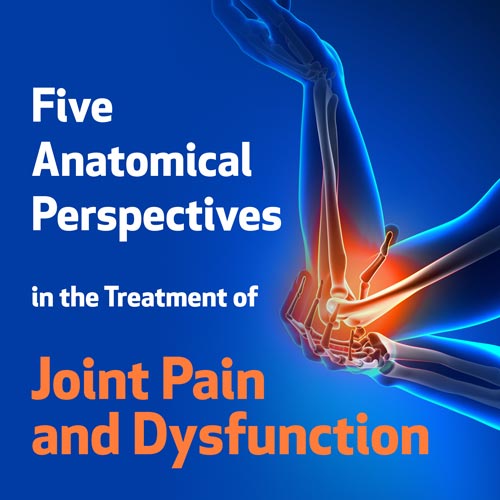

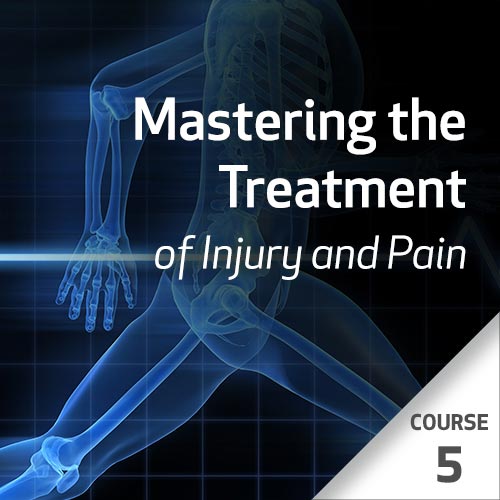

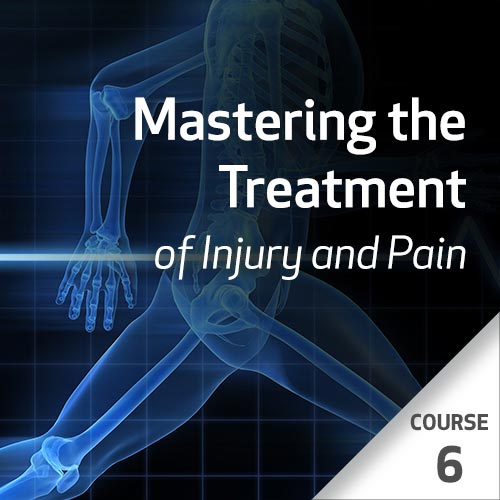

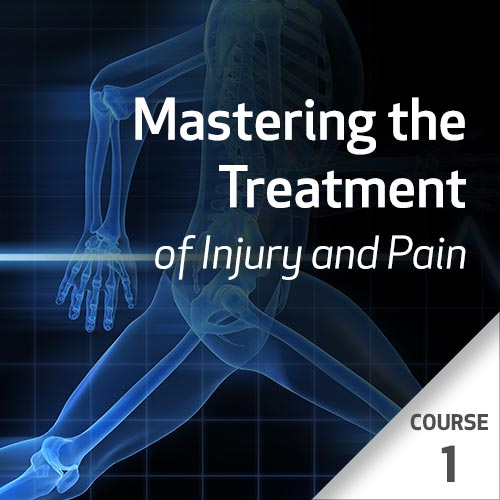

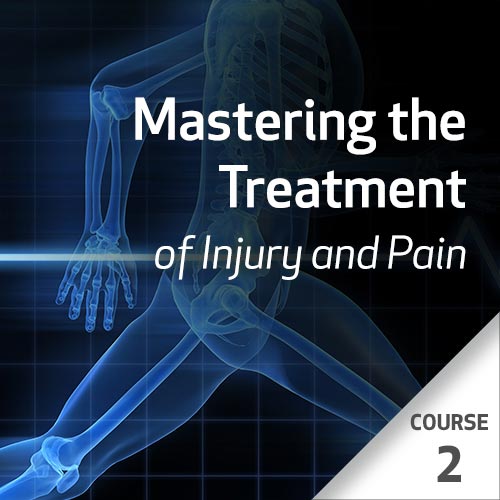

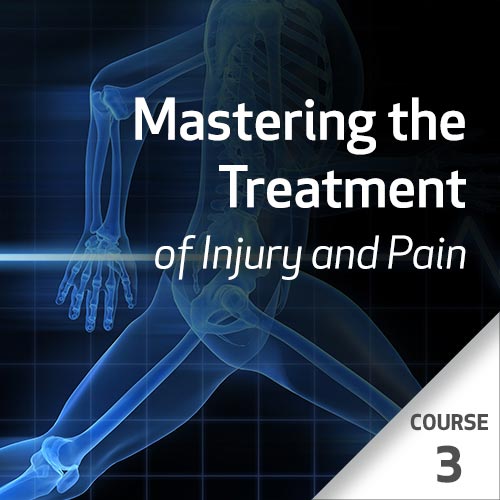

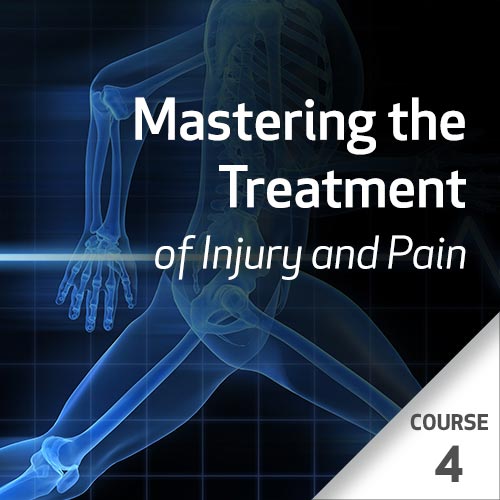

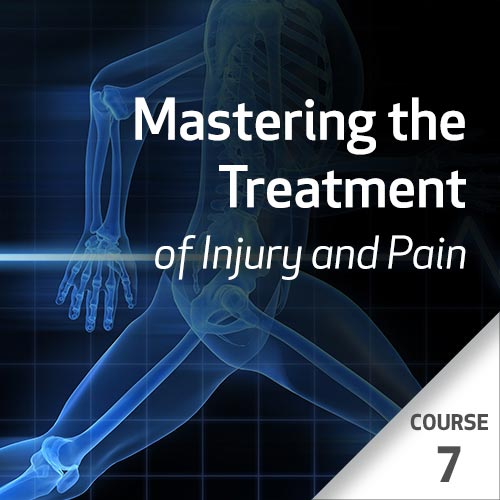

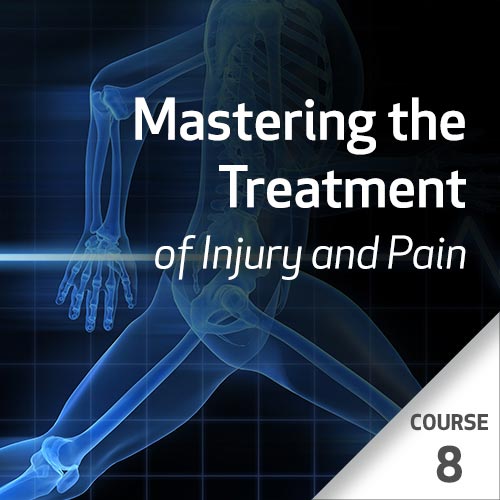

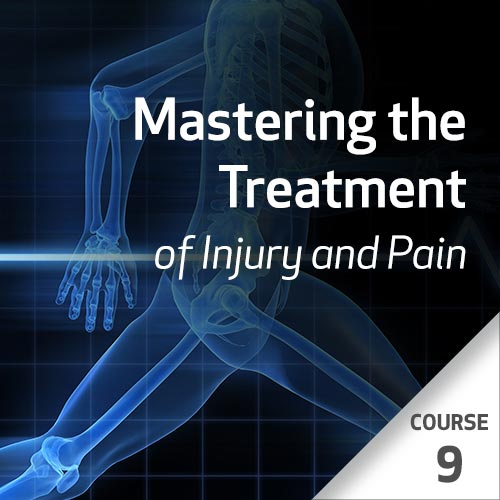

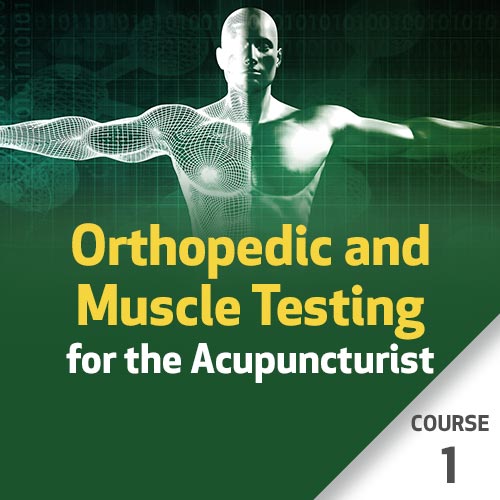


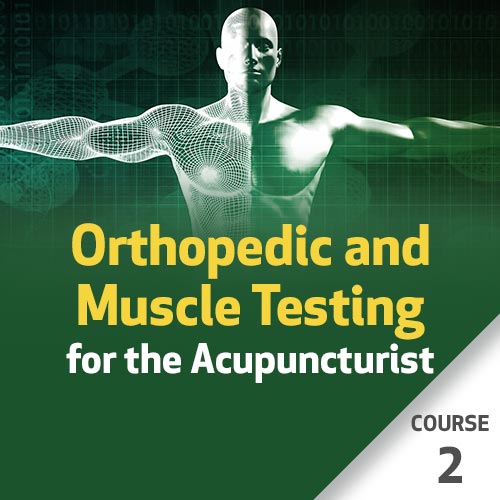


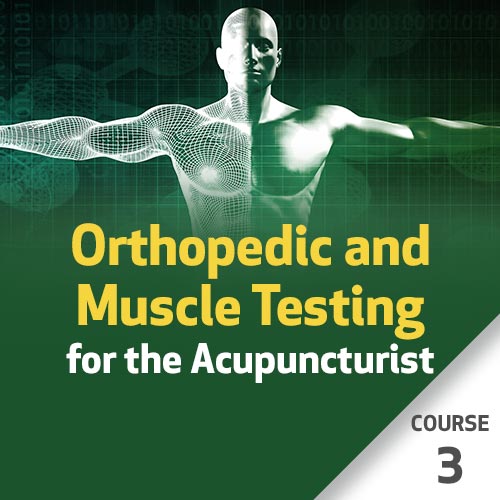


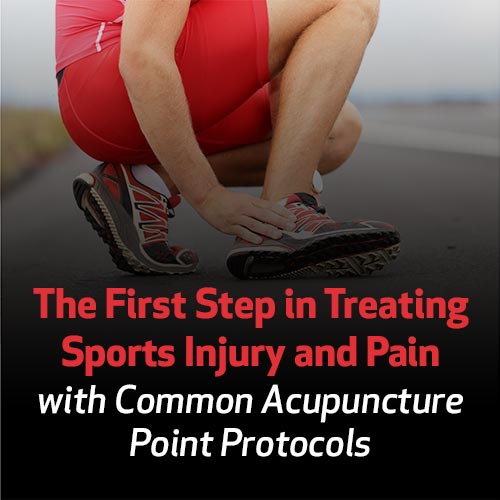

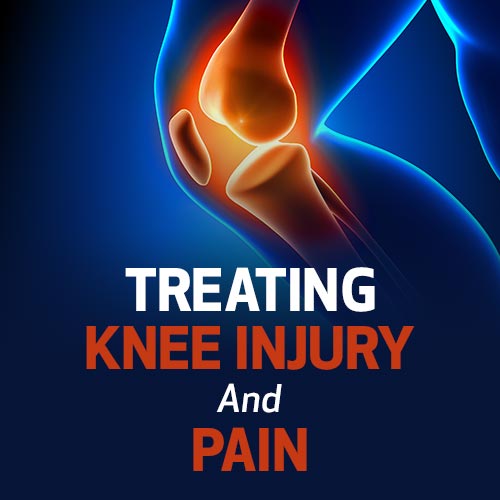

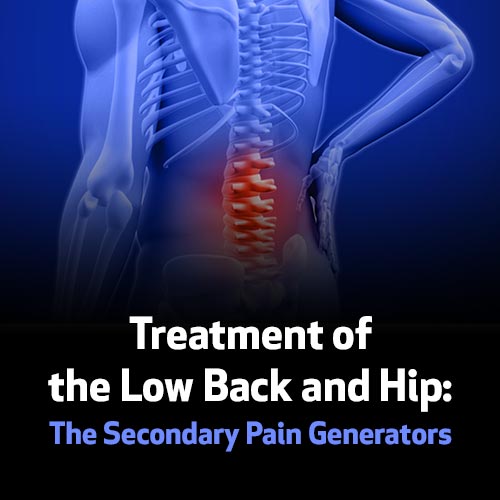

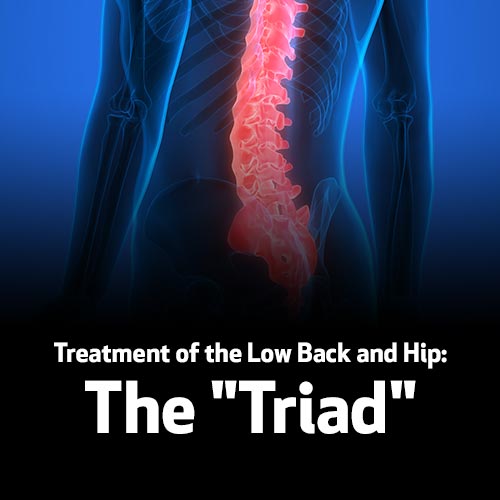

Acupuncture Sports Medicine Webinar Series - Course 1
The Treatment of Stiff Neck and Levator Scapulae
with Whitfield Reaves
See In StoreOverview
This 1.5 hour webinar features the use of advanced acupuncture techniques in the treatment of stiff neck and pain due to levator scapulae syndrome.
The levator is the cause of neck and shoulder pain for a significant number of patients, and is often overlooked by the acupuncture practitioner. While levator dysfunction might not be the entire cause of pain - other points, treatments, and techniques may be necessary - the simple techniques covered in this webinar benefit many patients. As well, levator dysfunction is often a component of treatment to other injuries, such as strain to the supraspinatous and infraspinatous and other dysfunctions of the shoulder.
Included in this webinar is a short introduction to the Four-Step Approach used by Whitfield Reaves in the treatment of sports injuries. These include the tendino-muscle meridians, distal points, and strategies using the opposite side and opposite extremity.
Then, the anatomy of the levator scapulae, including correct patient positioning and palpation is covered. Finally, precise treatment techniques at the site of injury and the most effective acupuncture points are covered. This includes local, adjacent, and distal points.
Having spent over 25 years specializing in the treatment of musculo-skeletal disorders, Whitfield's clinical experience is invaluable for practitioners working with pain.
This series was introduced in 2011 in standard definition, and reflects the evolution of sports acupuncture at the time. It is based upon single individual sports injuries and each course provides simple and direct video for first time viewing. Additionally, it assists to increase precision through repetition and review. Even if you have taken the newer HD series, Mastering the Treatment of Injury and Pain, this older series is still an excellent resource for review and is filled with clinical gems.
Learning Objectives
- Name the major point used to directly treat the levator.
- Identify the origin, insertion, and action of the levator scapulae muscle
- Name 3 signs and symptoms of levator dysfunction
Your Teacher

Whitfield Reaves
In practice for over 40 years, Whitfield Reaves, OMD, L.Ac., specializes in the field of sports medicine. Being in the forefront of the acupuncture sports medicine field, Whitfield's experience includes working with athletes at the 1984 LA Olympic Games at the 1984 LA Olympic Games and countless other sport competitions since. He is an author, he teaches internationally as well.
Categories
Tags
Acupuncture Sports Medicine Webinar Series - Course 10
Lateral Knee Pain: Ilio-Tibial Band
with Whitfield Reaves
See In StoreOverview
Lateral Knee Pain: Ilio-Tibial Band Syndrome
Ilio-tibial band syndrome is the most common cause of lateral knee pain, and involves pain in the lateral knee and thigh. It is a sports injury that every acupuncturist should become proficient in treating, as it is common, and responds well to acupuncture treatment. Tight ilio-tibial bands can be seen in the non-athletic population, and they respond well to the techniques discussed in this webinar.
The injury is at the level of the muscles and tendons, with qi and blood stagnation in the channels and collaterals. This case is clearly Gall Bladder meridian pathology. Sometimes the diagnosis of wind (feng) may be used for the “popping” and “snapping” pain at the lateral knee. Local points including Gall Bladder 34, Gall Bladder 33, and Gall Bladder 31 often work well, especially when combined with distal points. However, treatment of the gluteus medius muscle is essential. This may be one of the most effective and reliable treatment protocols, according to the clinical experience of webinar instructor Whitfield Reaves. The location of the extraordinary point Jiankua will be described, which the practitioner will find extremely useful in this condition, as well as other hip and gluteal conditions.
This series was introduced in 2011 in standard definition, and reflects the evolution of sports acupuncture at the time. It is based upon single individual sports injuries and each course provides simple and direct video for first time viewing. Additionally, it assists to increase precision through repetition and review. Even if you have taken the newer HD series, Mastering the Treatment of Injury and Pain, this older series is still an excellent resource for review and is filled with clinical gems.
Learning Objectives
- To know two non-local treatments that may be used in the treatment of the condition.
- To use palpation in order to diagnose involvement of the distal ilio-tibial band.
- To be able to describe needle technique at the site of the gluteus medius and point Jiankua.
- To be able to describe needle technique on the local zone of the distal ilio-tibial band and point Gall Bladder 33.
- To use palpation in order to diagnose involvement of the gluteus medius.
Your Teacher

Whitfield Reaves
In practice for over 40 years, Whitfield Reaves, OMD, L.Ac., specializes in the field of sports medicine. Being in the forefront of the acupuncture sports medicine field, Whitfield's experience includes working with athletes at the 1984 LA Olympic Games at the 1984 LA Olympic Games and countless other sport competitions since. He is an author, he teaches internationally as well.
Categories
Tags
Acupuncture Sports Medicine Webinar Series - Course 11
Anterior Knee Pain: The Patello-Femoral Joint
with Whitfield Reaves
See In StoreOverview
Dysfunction of the patello-femoral joint produces pain in the anterior knee in the region of the patella and the extraordinary points, Xiyan. It is a repetitive stress injury characterized by inflammation and irritation of the undersurface of the patella. This may progress to chondromalacia or anterior compartment osteoarthritis.
Knee pain from patello-femoral joint dysfunction is the most common knee disorder encountered by the orthopedic physician. Patients with this complaint are very common to the acupuncture clinic. And while they may be runners, jumpers, or cyclists, patellar pain can be seen in all ages – even with moderate levels of activity. Understanding the complexity of the causes, and the available western treatments is important knowledge to add to the relatively simple and straightforward treatments of acupuncture. In this webinar, Whitfield Reaves will discuss some useful acupuncture sports medicine techniques to treat and manage this commonly seen condition.
This series was introduced in 2011 in standard definition, and reflects the evolution of sports acupuncture at the time. It is based upon single individual sports injuries and each course provides simple and direct video for first time viewing. Additionally, it assists to increase precision through repetition and review. Even if you have taken the newer HD series, Mastering the Treatment of Injury and Pain, this older series is still an excellent resource for review and is filled with clinical gems.
Learning Objectives
- To know three common signs and symptoms of patello-femoral joint involvement.
- To know two non-local treatments that may be used in the treatment of anterior knee pain.
- To use palpation and orthopedic tests in order to diagnose involvement of the patello-femoral joint.
- To be able to describe needle technique at Xiyan and the sub-patellar region.
- To be able to describe needle technique on two important zones of the quadriceps.
Your Teacher

Whitfield Reaves
In practice for over 40 years, Whitfield Reaves, OMD, L.Ac., specializes in the field of sports medicine. Being in the forefront of the acupuncture sports medicine field, Whitfield's experience includes working with athletes at the 1984 LA Olympic Games at the 1984 LA Olympic Games and countless other sport competitions since. He is an author, he teaches internationally as well.
Categories
Tags
Acupuncture Sports Medicine Webinar Series - Course 12
Knee Pain: The Medial Compartment
with Whitfield Reaves
See In StoreOverview
Knee Pain: The Medial Compartment (Acute and Chronic)
Acute pain, inflammation, and swelling in the medial knee is often experienced after injury or trauma in sports. It may involve sprain of the medial collateral ligament (MCL) or tear to the medial meniscus. From a meridian (jing-luo) perspective, we usually think of the three leg yin meridians – the Spleen, the Kidney, and the Liver. However, medial knee pain should be understood in terms of western orthopedic diagnosis. Your treatment plan, rehabilitation and prognosis for the patient all arise from this assessment. But most importantly, prognosis – what you communicate to the patient – is what is unique to each diagnosis.
Pain, inflammation, swelling, and stiffness of the medial knee, at the joint space, is also seen as a chronic condition. This pain is often due to medial compartment osteoarthritis. Sources suggest that over 30 percent of individuals between the ages of 60 and 90 are affected by this condition in one of the three compartments of the knee. That percentage will likely increase over the next decade, and therefore its inclusion in this webinar. Commonly diagnosed as a Bi syndrome, the three leg yin meridians encompass the medial joint space. Webinar instructor Whitfield Reaves will discuss a very useful technique of “threading the opening of a joint space” in the region of Liver 8.
This series was introduced in 2011 in standard definition, and reflects the evolution of sports acupuncture at the time. It is based upon single individual sports injuries and each course provides simple and direct video for first time viewing. Additionally, it assists to increase precision through repetition and review. Even if you have taken the newer HD series, Mastering the Treatment of Injury and Pain, this older series is still an excellent resource for review and is filled with clinical gems.
Learning Objectives
- To perform the valgus stress test in order to diagnose the MCL involvement.
- To use palpation of the medial joint space.
- To know two signs and symptoms of medial collateral ligament sprain, and two signs and symptoms of chronic medial joint space arthritis.
- To know two non-local treatments that may be used in the treatment of the medial compartment of the knee.
- To be able to describe needle technique on the local zone of the medial joint space of the knee, in the region of Liver 8.
Your Teacher

Whitfield Reaves
In practice for over 40 years, Whitfield Reaves, OMD, L.Ac., specializes in the field of sports medicine. Being in the forefront of the acupuncture sports medicine field, Whitfield's experience includes working with athletes at the 1984 LA Olympic Games at the 1984 LA Olympic Games and countless other sport competitions since. He is an author, he teaches internationally as well.
Categories
Tags
Acupuncture Sports Medicine Webinar Series - Course 13
The Hamstring Muscle
with Whitfield Reaves
See In StoreOverview
Hamstring strain is most commonly diagnosed under the category of accident/trauma, and is a sports injury frequently seen by the acupuncturist. The trauma is at the level of the muscles and tendons, with qi and blood stagnation in the channels and collaterals. Hamstring strain is clearly Bladder meridian pathology, although the Kidney meridian may also be involved. Occasionally, strain and muscle tightness may be a repetitive stress disorder due to the accumulation of micro-trauma. Both cases are treated with similar points and techniques.
Treatment of the hamstring demonstrates the diversity of point selection for local and adjacent treatment in acupuncture sports medicine. Often, the point Bladder 37 is useful in releasing the entire hamstring group. This point is an example of “yin” techniques, needling into the space between the medial and lateral hamstrings. However, sometimes both the motor points and the trigger points are necessary. This is a “yang” technique, and involves treatment to ashi points located in the taut bands of muscle, slightly medial or lateral to the Bladder channel. Hamstring treatment is also is a good example of how simple orthopedic assessment, including manual muscle testing and passive stretching, can be integrated into the diagnostic process.
This series was introduced in 2011 in standard definition, and reflects the evolution of sports acupuncture at the time. It is based upon single individual sports injuries and each course provides simple and direct video for first time viewing. Additionally, it assists to increase precision through repetition and review. Even if you have taken the newer HD series, Mastering the Treatment of Injury and Pain, this older series is still an excellent resource for review and is filled with clinical gems.
Learning Objectives
- To perform manual muscle testing that assist in the assessment of hamstring involvement.
- To be able to describe needle technique on the taut bands of the motor points and the trigger points.
- To use palpation in order to diagnose hamstring involvement, differentiating between the lateral and the medial portions of the muscle.
- To know two non-local treatments that may be used in the treatment of the hamstring strain.
- To be able to describe needle technique on the point Bladder 37
Your Teacher

Whitfield Reaves
In practice for over 40 years, Whitfield Reaves, OMD, L.Ac., specializes in the field of sports medicine. Being in the forefront of the acupuncture sports medicine field, Whitfield's experience includes working with athletes at the 1984 LA Olympic Games at the 1984 LA Olympic Games and countless other sport competitions since. He is an author, he teaches internationally as well.
Categories
Tags
Acupuncture Sports Medicine Webinar Series - Course 14
Shin Splints: The Anterior Compartment
with Whitfield Reaves
See In StoreOverview
Shin splints is a repetitive stress injury characterized by strain or inflammation of the anterior tibialis or other anterior compartment muscles of the leg. The site of injury may be the muscle, the tendon, or at the attachment to the periosteum and bone. The patient presents with pain and tenderness along the anterior lateral aspect of the leg just lateral to the tibia.
Shin splints is the common term for anterior tibial stress syndrome. It is a frequent sports injury, as it comprises approximately 60 percent of all leg pain injuries. In this webinar, Whitfield Reaves will discuss the injury with its relatively easy diagnosis, assessment, and treatment techniques. This case is clearly Stomach meridian pathology, and sometimes the zang-fu organs are involved. It is an important injury to learn as a practitioner, as even walking and hiking can produce the symptoms.
This series was introduced in 2011 in standard definition, and reflects the evolution of sports acupuncture at the time. It is based upon single individual sports injuries and each course provides simple and direct video for first time viewing. Additionally, it assists to increase precision through repetition and review. Even if you have taken the newer HD series, Mastering the Treatment of Injury and Pain, this older series is still an excellent resource for review and is filled with clinical gems.
Learning Objectives
- To know two non-local treatments that may be used in the treatment of the shin splints.
- To know location and needle technique for the motor point of the tibialis anterior.
- To diagnose the shin splints from analysis of the patients signs and symptoms.
- To use palpation in order to diagnose shin splints.
- To perform manual muscle testing of the anterior compartment-- resisted dorsiflexion-- as part of the assessment procedures.
- To describe the needle technique on the local zone of ahshi points between the tibia and the anterior compartment muscles.
Your Teacher

Whitfield Reaves
In practice for over 40 years, Whitfield Reaves, OMD, L.Ac., specializes in the field of sports medicine. Being in the forefront of the acupuncture sports medicine field, Whitfield's experience includes working with athletes at the 1984 LA Olympic Games at the 1984 LA Olympic Games and countless other sport competitions since. He is an author, he teaches internationally as well.
Categories
Tags
Acupuncture Sports Medicine Webinar Series - Course 15
Achilles Tendonitis
with Whitfield Reaves
See In StoreOverview
Achilles tendonitis is a repetitive stress injury characterized by pain, inflammation, and swelling of the achilles tendon and its sheath. The entire calf muscle group may be affected. Achilles injury is usually mid-tendon, about 2 to 6 centimeters proximal to its attachment to the calcaneus. This is usually a repetitive stress disorder due to the accumulation of micro-trauma. However, it may occur as an acute strain.
In general, acupuncture is beneficial for most patients using proper treatment described in this webinar. Instructor Whitfield Reaves will discuss the use of local needling using the “threading the tendon”, along with other adjacent and distal points. The practitioner should become much more familiar and confident with achilles tendonitis from the instruction and information of this webinar.
This series was introduced in 2011 in standard definition, and reflects the evolution of sports acupuncture at the time. It is based upon single individual sports injuries and each course provides simple and direct video for first time viewing. Additionally, it assists to increase precision through repetition and review. Even if you have taken the newer HD series, Mastering the Treatment of Injury and Pain, this older series is still an excellent resource for review and is filled with clinical gems.
Learning Objectives
- To know two points proximal to the achilles tendon and two points distal to the tendon useful in treating this condition.
- To describe the needle technique of “threading the tendon” on the local zone of the achilles tendon.
- To perform manual muscle testing and palpation that assists in the diagnosis of the achilles tendonitis.
- To be able to name two important symptoms commonly reported by the patient with achilles tendonitis.
- To know two points proximal to the tendon that may be used in the treatment of achilles tendonitis.
Your Teacher

Whitfield Reaves
In practice for over 40 years, Whitfield Reaves, OMD, L.Ac., specializes in the field of sports medicine. Being in the forefront of the acupuncture sports medicine field, Whitfield's experience includes working with athletes at the 1984 LA Olympic Games at the 1984 LA Olympic Games and countless other sport competitions since. He is an author, he teaches internationally as well.
Categories
Tags
Acupuncture Sports Medicine Webinar Series - Course 16
Lateral Ankle Sprain (Inversion)
with Whitfield Reaves
See In StoreOverview
Inversion ankle sprain is characterized by pain, swelling, and bruising of the lateral ankle and foot. This common sports injury results in ligament sprain and joint inflammation from inverting or inward rolling of the ankle. It is one of the most common of all sports injuries.
Ankle sprains involve injury at the level of the tendons, ligaments, and the joint. There is qi and blood stagnation in the channels and collaterals. The Gall Bladder is usually the primary meridian involved, although the Bladder and Stomach channels may also be affected. Local needling, in the region of Gall Bladder 40, may aggravate and is often avoided during the early stages of acute symptoms. Various options in the Four Step approach that Whitfield Reaves utilizes will give the practitioner numerous alternatives to local needling.
This series was introduced in 2011 in standard definition, and reflects the evolution of sports acupuncture at the time. It is based upon single individual sports injuries and each course provides simple and direct video for first time viewing. Additionally, it assists to increase precision through repetition and review. Even if you have taken the newer HD series, Mastering the Treatment of Injury and Pain, this older series is still an excellent resource for review and is filled with clinical gems.
Learning Objectives
- To use palpation in order to assess the severity of a lateral ankle sprain.
- To name and locate two points on or adjacent to the peroneus longus muscle.
- To describe needle technique on the local zone of the talar sinus at Gall Bladder 40.
- To know two distal point treatments that may be used in the treatment of the ankle sprain.To know two proximal point treatments that may be used in the treatment of the ankle sprain.
Your Teacher

Whitfield Reaves
In practice for over 40 years, Whitfield Reaves, OMD, L.Ac., specializes in the field of sports medicine. Being in the forefront of the acupuncture sports medicine field, Whitfield's experience includes working with athletes at the 1984 LA Olympic Games at the 1984 LA Olympic Games and countless other sport competitions since. He is an author, he teaches internationally as well.
Categories
Tags
Acupuncture Sports Medicine Webinar Series - Course 17
Plantar Fasciitis
with Whitfield Reaves
See In StoreOverview
Plantar fasciitis is characterized by pain and stiffness in the heel and the plantar aspect of the foot. It is usually a repetitive stress injury characterized by inflammation and irritation of the plantar fascia. Plantar fasciitis is the most common cause of heel pain, and occurs in all types of athletic and active individuals. It is commonly seen in runners. However, walking and standing on a hard surface may also cause symptoms.
The techniques discussed in this webinar have been found to be clinically useful by webinar instructor Whitfield Reaves. Needling includes the region of Kidney 1, and the attachment of the plantar fascia in the region of the extraordinary point Shimian. Because many patients with this type of heel pain have tight calf muscles, the Bladder meridian may also be involved and is commonly treated. In this webinar you will learn the treatment options that result in good clinical outcomes.
This series was introduced in 2011 in standard definition, and reflects the evolution of sports acupuncture at the time. It is based upon single individual sports injuries and each course provides simple and direct video for first time viewing. Additionally, it assists to increase precision through repetition and review. Even if you have taken the newer HD series, Mastering the Treatment of Injury and Pain, this older series is still an excellent resource for review and is filled with clinical gems.
Learning Objectives
- To know two proximal points used to treat plantar fasciitis.
- To describe needle technique on the local zone of the plantar fascia at Shimian in the center of the heel.
- To use palpation in order to diagnose plantar fasciitis.
- To know two adjacent points used to treat plantar fasciitis.
- To describe needle technique on the local zone of the plantar fascia at “medial Shimian”.
Your Teacher

Whitfield Reaves
In practice for over 40 years, Whitfield Reaves, OMD, L.Ac., specializes in the field of sports medicine. Being in the forefront of the acupuncture sports medicine field, Whitfield's experience includes working with athletes at the 1984 LA Olympic Games at the 1984 LA Olympic Games and countless other sport competitions since. He is an author, he teaches internationally as well.
Categories
Tags
Acupuncture Sports Medicine Webinar Series - Course 18
Low Back Pain
with Whitfield Reaves
See In StoreOverview
Low Back Pain: The Quadratus Lumborum Muscle
Acute or chronic low back pain and spasm due to the quadratus lumborum (QL) is one of the most overlooked diagnoses by the TCM practitioner. The practitioner who integrates western anatomy and orthopedics can skillfully treat this muscle. It is commonly seen in low back pain, degenerative disc disease, and other related pain syndromes.
Dr. Janet Travell calls the quadratus lumborum the “joker of low back pain”. When the QL has active trigger points or is in spasm, a wide range of pain patterns present. Pain is often one-sided, and may radiate to the gluteal and inguinal regions. Strain to the quadratus may be seen acutely, caused by movements involving lifting and twisting. Motor vehicle accidents, trauma and falls may also injure the QL. I have seen golfers, tennis players, and cyclists during hill-climbing strain the muscle due to the peculiar twisting mechanics of their sport. And chronic dysfunction may occur from poor posture and position during sleep and sitting.
Treatment to the QL may be specific in acute low back sprain/strain. It may be combined with treatments for other causes of low back pain. This webinar will alert the practitioner to its involvement, and how to safely treat this rather anatomically “hidden” muscle.
This series was introduced in 2011 in standard definition, and reflects the evolution of sports acupuncture at the time. It is based upon single individual sports injuries and each course provides simple and direct video for first time viewing. Additionally, it assists to increase precision through repetition and review. Even if you have taken the newer HD series, Mastering the Treatment of Injury and Pain, this older series is still an excellent resource for review and is filled with clinical gems..
Learning Objectives
- To use precise palpation of the lumbar musculature in order to diagnose the condition.
- To name two acupuncture points located on the affected muscle.
- To know three related conditions that treatment of the QL may be useful.
- To diagnose QL involvement from observation of signs and symptoms.
- To be able to describe needle technique on the local points on the QL muscle.
Your Teacher

Whitfield Reaves
In practice for over 40 years, Whitfield Reaves, OMD, L.Ac., specializes in the field of sports medicine. Being in the forefront of the acupuncture sports medicine field, Whitfield's experience includes working with athletes at the 1984 LA Olympic Games at the 1984 LA Olympic Games and countless other sport competitions since. He is an author, he teaches internationally as well.
Categories
Tags
Acupuncture Sports Medicine Webinar Series - Course 2
Shoulder Pain - The Supraspinatous Muscle
with Whitfield Reaves
See In StoreOverview
Whitfield Reaves has frequently commented that there is no single injury more rewarding to treat than shoulder pain that is a result of supraspinatous tendonitis. With both trigger and motor points located in the region of Small Intestine 12, the practitioner is able to treat this rotator cuff muscle with an easy-to-master acupuncture sports medicine needle technique. However, the precarious location of the supraspinatous tendon beneath the acromion, between the points LI 16 and LI 15, may take a bit more practice to needle with precision.
What makes the supraspinatous muscle problematic for the acupuncturist is that the pain often refers to the deltoid region of the shoulder, and, occasionally, distally down the arm and forearm. This deltoid region pain leads many practitioners to a diagnosis of Large Intestine (Yang ming) and San Jiao (Shao yang) disorders; this often results in treatments that rarely suffice. This one-hour webinar by Whitfield Reaves covers these issues of assessment and treatment, and clearly give the practitioner a guide to treat this common cause of shoulder pain.
This series was introduced in 2011 in standard definition, and reflects the evolution of sports acupuncture at the time. It is based upon single individual sports injuries and each course provides simple and direct video for first time viewing. Additionally, it assists to increase precision through repetition and review. Even if you have taken the newer HD series, Mastering the Treatment of Injury and Pain, this older series is still an excellent resource for review and is filled with clinical gems.
Learning Objectives
- To perform one orthopedic test that assists in the diagnosis of supraspinatus tendon impingement syndrome.
- To be able to describe needle technique on the local point SI 12.
- To use palpation in order to locate trigger points of the supraspinatus.
- To be able to describe needle technique on the sub-acromial zone using LI 16 and LI 15.
- To perform two orthopedic tests that assist in the diagnosis of supraspinatus involvement.
Your Teacher

Whitfield Reaves
In practice for over 40 years, Whitfield Reaves, OMD, L.Ac., specializes in the field of sports medicine. Being in the forefront of the acupuncture sports medicine field, Whitfield's experience includes working with athletes at the 1984 LA Olympic Games at the 1984 LA Olympic Games and countless other sport competitions since. He is an author, he teaches internationally as well.
Categories
Tags
Acupuncture Sports Medicine Webinar Series - Course 3
Shoulder Pain - The Infraspinatous Muscle
with Whitfield Reaves
See In StoreOverview
The infraspinatous muscle, with common trigger points, refers pain to the area of the deltoid and the shoulder joint. Seen both as an acute or chronic injury, inflammation of the muscle and tendon, as well as possible strain at the attachment to the humerus makes this rotator cuff muscle an important one to master. Like its adjacent muscle, the supraspinatous, this referral pattern leads many practitioners to a diagnosis of Large Intestine (Yangming) and San Jiao (Shaoyang) disorders, which often results in overlooking this scapular-region muscle.
The Small Intestine meridian encompasses the belly of the infraspinatous in the region of Small Intestine 11. The area between Small Intestine 9 and 10 is the muscle-tendon junction – also a common source of pain. Treating qi and blood stagnation in the infraspinatous is described and demonstrated in detail by Whitfield Reaves in this webinar.
This series was introduced in 2011 in standard definition, and reflects the evolution of sports acupuncture at the time. It is based upon single individual sports injuries and each course provides simple and direct video for first time viewing. Additionally, it assists to increase precision through repetition and review. Even if you have taken the newer HD series, Mastering the Treatment of Injury and Pain, this older series is still an excellent resource for review and is filled with clinical gems.
Learning Objectives
- To perform manual muscle testing to assist in the diagnosis of the condition.
- To name three related conditions that SI 11 may be effective in treating.
- To be able to describe needle technique on the local zone of the muscle belly, in the region of SI 11.
- To name two adjacent points and two distal points useful in treating the infraspinatous.
- To use palpation in order to diagnose stagnation at the muscle-tendon junction.
Your Teacher

Whitfield Reaves
In practice for over 40 years, Whitfield Reaves, OMD, L.Ac., specializes in the field of sports medicine. Being in the forefront of the acupuncture sports medicine field, Whitfield's experience includes working with athletes at the 1984 LA Olympic Games at the 1984 LA Olympic Games and countless other sport competitions since. He is an author, he teaches internationally as well.
Categories
Tags
Acupuncture Sports Medicine Webinar Series - Course 4
Frozen Shoulder: Pain and Decreased Range of Motion
with Whitfield Reaves
See In StoreOverview
Frozen shoulder is not necessarily a precise medical diagnosis. In fact, the causes of frozen shoulder are not fully understood and texts differ in their description of the pathology. The process may involve a thickening and contracture of the capsule surrounding the shoulder joint. Some sources call the condition “adhesive capsulitis,” where adhesions within the joint are responsible for decreased mobility. Others suggest that synovial inflammation is causative. The work of Dr. Janet Travell looks at myofascial causes of frozen shoulder that result from trigger points and dysfunction of the subscapularis muscle. Sometimes associated with known etiology, such as capsular lesions, rotator cuff injury, or trauma, frozen shoulder may be as simple as a post-surgical occurrence.
With all these different causes of dysfunction, it is no wonder that no single technique of acupuncture works a majority of the time. Whitfield Reaves will discuss some of the approaches he has found useful in treating this sometimes stubborn, clinical complaint. And while frozen shoulder may resist treatment at times, the practitioner needs to be fully aware of its causes, and thus, precise treatment may be better performed. Different complementary treatments, such as physical therapy, will also be discussed.
This series was introduced in 2011 in standard definition, and reflects the evolution of sports acupuncture at the time. It is based upon single individual sports injuries and each course provides simple and direct video for first time viewing. Additionally, it assists to increase precision through repetition and review. Even if you have taken the newer HD series, Mastering the Treatment of Injury and Pain, this older series is still an excellent resource for review and is filled with clinical gems.
Learning Objectives
- To use palpation in order to assess affected muscles of the shoulder girdle.
- To name three acupuncture points located on the affected muscles of the shoulder.
- To know two non-local treatments that may be used in the treatment of the condition.
- To diagnose frozen shoulder from observation of signs, including range of motion.
Your Teacher

Whitfield Reaves
In practice for over 40 years, Whitfield Reaves, OMD, L.Ac., specializes in the field of sports medicine. Being in the forefront of the acupuncture sports medicine field, Whitfield's experience includes working with athletes at the 1984 LA Olympic Games at the 1984 LA Olympic Games and countless other sport competitions since. He is an author, he teaches internationally as well.
Categories
Tags
Acupuncture Sports Medicine Webinar Series - Course 5
Anterior Shoulder Pain - Biceps Muscle
with Whitfield Reaves
See In StoreOverview
The long head of the biceps, with its predictable stagnation in the bicepital groove, presents with pain in the anterior and anterior-lateral aspect of the shoulder. Pain may radiate down the biceps muscle of the forearm. For the acupuncture practitioner, this is an important injury with which to be acquainted. While not as common as rotator cuff injuries, bicepital lesions are overlooked by the acupuncturist. Diagnosis and assessment are not always definitive, and acupuncture treatment can be complicated. Furthermore, it does not help that there are no acupuncture points located at the site of the injury.
Commonly diagnosed in the category of accident/trauma, biceps tendonitis is usually a repetitive stress disorder due to the accumulation of micro-trauma. However, it may occasionally occur as an acute strain. The injury is at the level of the muscles and tendons, with qi and blood stagnation in the channels and collaterals. Bicepital tendonitis usually presents as Lung meridian pathology and it generally responds to local needling or, in some cases, local cupping. Specific distal points complete the treatment and all of these protocols are thoroughly described in this one-hour webinar by Whitfield Reaves.
This series was introduced in 2011 in standard definition, and reflects the evolution of sports acupuncture at the time. It is based upon single individual sports injuries and each course provides simple and direct video for first time viewing. Additionally, it assists to increase precision through repetition and review. Even if you have taken the newer HD series, Mastering the Treatment of Injury and Pain, this older series is still an excellent resource for review and is filled with clinical gems.
Learning Objectives
- To know 3 complementary muscles that may be treated when the biceps is the primary site of stagnation.
- To perform at least one orthopedic test and palpation that assist in the diagnosis of the condition.
- To be able to describe needle technique on the local zone of the bicepital tendon.
- To know two distal points that may be used in the treatment of bicepital pain.
- To be able to describe cupping techniques in the local zone of the bicepital tendon.
Your Teacher

Whitfield Reaves
In practice for over 40 years, Whitfield Reaves, OMD, L.Ac., specializes in the field of sports medicine. Being in the forefront of the acupuncture sports medicine field, Whitfield's experience includes working with athletes at the 1984 LA Olympic Games at the 1984 LA Olympic Games and countless other sport competitions since. He is an author, he teaches internationally as well.
Categories
Tags
Overview
Pain and inflammation on the top of the shoulder is usually due to pathology of the acromial-clavicular (AC) joint. Acutely, this is called a shoulder separation, and involves sprain to the acromial-clavicular ligament. Chronically, pain at this joint may simply be arthritis, and is diagnosed as a Bi syndrome.
Because there is no defined point at the AC joint, the acupuncturist often overlooks this as a cause of shoulder pain, especially in the chronic state. Located between Large Intestine 16 on the medial aspect and Large Intestine 15 on the lateral aspect, these two points serve as effective adjacent sites for needling. However, this webinar will cover some very innovative treatments involving “threading the joint space” at Large Intestine 15.5.
AC separation as well as chronic inflammation involves injury at the level of the ligaments, tendons, and the joint. There is qi and blood stagnation in the channels and collaterals. The Large Intestine is the primary meridian affected. Thus, in addition to the local and adjacent treatment, distal Yang-ming points may greatly assist in effective outcomes. In this webinar, Whitfield Reaves will discuss this often overlooked diagnosis, and cover the relatively simple details of acupuncture sports medicine techniques.
This series was introduced in 2011 in standard definition, and reflects the evolution of sports acupuncture at the time. It is based upon single individual sports injuries and each course provides simple and direct video for first time viewing. Additionally, it assists to increase precision through repetition and review. Even if you have taken the newer HD series, Mastering the Treatment of Injury and Pain, this older series is still an excellent resource for review and is filled with clinical gems.
Learning Objectives
- To know two adjacent points that may be used in the treatment of the condition.
- To name two distal points that may be useful in an acute AC joint separation.
- To be able to describe needle technique on the local zone of the AC joint.
- To perform one orthopedic test and palpation that assists in the diagnosis of the condition.
- To describe the symptoms reported by the patient suffering from AC joint arthritis.
- To know the signs and symptoms of shoulder separation, and when it is necessary to refer the patient for orthopedic evaluation.
Your Teacher

Whitfield Reaves
In practice for over 40 years, Whitfield Reaves, OMD, L.Ac., specializes in the field of sports medicine. Being in the forefront of the acupuncture sports medicine field, Whitfield's experience includes working with athletes at the 1984 LA Olympic Games at the 1984 LA Olympic Games and countless other sport competitions since. He is an author, he teaches internationally as well.
Categories
Tags
Acupuncture Sports Medicine Webinar Series - Course 7
Carpal Tunnel Syndrome
with Whitfield Reaves
See In StoreOverview
Most acupuncture practitioners are familiar with the pain, tingling, and numbness in the palmar aspect of the hand and wrist seen in carpal tunnel syndrome. Often, it is a repetitive stress injury characterized by entrapment, compression, or irritation to the median nerve in its narrow passageway of the carpal tunnel at the wrist. However, this webinar will attempt to honestly address the complex issues that make its treatment with acupuncture sometimes quite frustrating for both the practitioner and the patient.
Carpal tunnel syndrome is the most common type of compressive neuropathy seen in the clinic. Local treatment starts in the region of the point Pericardium 7; however, treatment for the carpal tunnel patient is never that simple, as there are often additional factors that contribute to the condition. Whitfield Reaves will discuss the complicated issues of carpal tunnel syndrome during this webinar, and will attempt to simplify this condition with various acupuncture sports medicine protocols.
This series was introduced in 2011 in standard definition, and reflects the evolution of sports acupuncture at the time. It is based upon single individual sports injuries and each course provides simple and direct video for first time viewing. Additionally, it assists to increase precision through repetition and review. Even if you have taken the newer HD series, Mastering the Treatment of Injury and Pain, this older series is still an excellent resource for review and is filled with clinical gems.
Learning Objectives
- To name three local and adjacent acupuncture points located at the site of injury.
- To describe the needle technique at PC 7, at the site of the carpal tunnel.
- To use palpation and observation to assess the stage of the condition.
- To diagnose carpal tunnel syndrome using two orthopedic tests.
- To know two non-local treatments that may be used in the treatment of carpal tunnel syndrome.
Your Teacher

Whitfield Reaves
In practice for over 40 years, Whitfield Reaves, OMD, L.Ac., specializes in the field of sports medicine. Being in the forefront of the acupuncture sports medicine field, Whitfield's experience includes working with athletes at the 1984 LA Olympic Games at the 1984 LA Olympic Games and countless other sport competitions since. He is an author, he teaches internationally as well.
Categories
Tags
Acupuncture Sports Medicine Webinar Series - Course 8
Tennis Elbow
with Whitfield Reaves
See In StoreOverview
Tennis elbow, or epicondylitis, presents with pain in the elbow at the lateral epicondyle and distally along the extensor tendon and muscles of the forearm. Usually a repetitive stress injury, it is characterized by inflammation and irritation of the forearm extensors and possibly the supinators. This is a typical sports injury, with the site of trauma occurring frequently on a yang surface (the extensors). It is much more common than medial epicondylitis, on the flexor muscle group of the yin surface.
Like many overuse injuries, its onset is insidious. There is often no specific traumatic event associated with the start of symptoms. However, the patient is predictably involved in recreational activities that require repetitive and vigorous use of the forearm muscles – like tennis and other racquet sports. Occupational stresses, such as construction work, also result in the injury. Similarly, the effects of computer keyboarding and utilizing a mouse, can also act as a stress to the extensor group.
The Large Intestine and San Jiao meridians encompass the region of the extensor muscles. However, neither of these two channels precisely encompass the lateral epicondyle. Hence, distal points may be difficult to determine, and the practitioner will need some “trick” techniques to treat this condition. As Whitfield Reaves will discuss in the webinar, the complexity of the anatomical structure of the common extensor tendon makes even local and adjacent needling more difficult than what some practitioners may want to admit.
This series was introduced in 2011 in standard definition, and reflects the evolution of sports acupuncture at the time. It is based upon single individual sports injuries and each course provides simple and direct video for first time viewing. Additionally, it assists to increase precision through repetition and review. Even if you have taken the newer HD series, Mastering the Treatment of Injury and Pain, this older series is still an excellent resource for review and is filled with clinical gems.
Learning Objectives
- To be able to describe needle technique on the local zone of the epicondyle.
- To know two non-local treatments that may be used in the treatment of the condition.
- To perform two orthopedic tests that assist in the diagnosis of the condition.
- To use palpation in order to diagnose the condition.
- To be able to describe needle technique on the local zone of the extensor tendon.
Your Teacher

Whitfield Reaves
In practice for over 40 years, Whitfield Reaves, OMD, L.Ac., specializes in the field of sports medicine. Being in the forefront of the acupuncture sports medicine field, Whitfield's experience includes working with athletes at the 1984 LA Olympic Games at the 1984 LA Olympic Games and countless other sport competitions since. He is an author, he teaches internationally as well.
Categories
Tags
Acupuncture Sports Medicine Webinar Series - Course 9
Hip Bursitis
with Whitfield Reaves
See In StoreOverview
Trochanteric bursitis presents as pain and stiffness in the hip and lateral thigh which may radiate down the ilio-tibial band. It is often a repetitive stress injury characterized by inflammation of the trochanteric bursa of the hip. Sometimes, it may occur from acute trauma. Hip bursitis usually involves the gluteal muscles and the ilio-tibial band.
Treatment of the hip bursae, as shown in this webinar, skillfully combines local and adjacent points. Locally, there are various techniques to treat the bursae itself. And the adjacent muscles, including the gluteus medius, alert the practitioner to vitally important tissues where no traditional acupuncture points are located. Whitfield Reaves teaches that treatment of trochanteric bursitis is one of the very highly effective injuries, as it responds quite well to the techniques of acupuncture sports medicine. He will include instruction on the extraordinary point Jiankua, an extremely useful point in hip and gluteal conditions.
This series was introduced in 2011 in standard definition, and reflects the evolution of sports acupuncture at the time. It is based upon single individual sports injuries and each course provides simple and direct video for first time viewing. Additionally, it assists to increase precision through repetition and review. Even if you have taken the newer HD series, Mastering the Treatment of Injury and Pain, this older series is still an excellent resource for review and is filled with clinical gems.
Learning Objectives
- To name two acupuncture points located distal to the bursae.
- To name one acupuncture point and one extraordinary point located locally or adjacent, in the gluteus medius muscle.
- To describe treatment proximally to the gluteus medius muscle.
- To use palpation in order to diagnose the presence of inflammation of the trochanteric bursae.
- To describe at least one technique used in the treatment of the bursae.
Your Teacher

Whitfield Reaves
In practice for over 40 years, Whitfield Reaves, OMD, L.Ac., specializes in the field of sports medicine. Being in the forefront of the acupuncture sports medicine field, Whitfield's experience includes working with athletes at the 1984 LA Olympic Games at the 1984 LA Olympic Games and countless other sport competitions since. He is an author, he teaches internationally as well.
Categories
Tags
Acupuncture Treatment of the Postural Muscles for Neck, Shoulder, and Low Back Dysfunction
How acupuncture protocols can be adapted to treat postural imbalances that lead to pain
with Whitfield Reaves
See In StoreOverview
In this three hour webinar, Whitfield Reaves will share some of his favorite treatment approaches that target the postural muscles. Practitioners frequently observe poor posture that results in pain and dysfunction. So prevelant, you probably already use many similar points to provide relief for the patient. This webinar offers some skillful adaptations and precision to these acupuncture treatments. And the approach also supports therapeutic exercise, which is usually needed to resolve postural dysfunction.
The following are important postural muscles that respond very well to precise acupuncture treatment and well chosen points.
1. The Levator scapulae
Provides support for the neck and shoulder.
2. The Posterior neck muscles
These extensors keep the head erect, and help with anterior head position
3. The Pectoralis minor
Often in contraction, this muscle pulls the shoulders in the anterior forward position. They need help! We will add the Rhomboid minor, which is not a postural muscle, to this discussion.
4. The Quadratus lumborum
The QL is key to the lumbar spine, and skillful needling of this muscle is one of the most important treatments in clinic.
5. The Core Muscles
Yes, they are technically not postural muscles, but their role in supporting the back and the lumbar spine is essential.
These five muscles, when anatomically understood, can provide effective sites for needling and correcting posture. Note that we will not teach corrective exercise in this video.
Learning Objectives
- Name two points located in the posterior neck muscles used for postural dysfunction.
- Name the three important wrap around core muscles.
- Be able to needle the quadratus lumborum muscle.
- Describe the origin and insertion of the levator scapulae muscle.
- Describe three ways to treat the pectoralis minor muscle.
Your Teacher

Whitfield Reaves
In practice for over 40 years, Whitfield Reaves, OMD, L.Ac., specializes in the field of sports medicine. Being in the forefront of the acupuncture sports medicine field, Whitfield's experience includes working with athletes at the 1984 LA Olympic Games at the 1984 LA Olympic Games and countless other sport competitions since. He is an author, he teaches internationally as well.
Categories
Tags
Athletic Performance – Using Acupuncture and Traditional Chinese Medicine
How Acupuncture, Herbal Medicine, and Chinese Medical Theory Apply to the Modern Athlete.
with Whitfield Reaves
See In StoreOverview
The enhancement of performance in athletes and the active patient is a most interesting topic. In this course Whitfield Reaves covers much of his experience with athletes over the last forty years, including the Olympics, cycling and running events, and the triathlon, both nationally and internationally.
Acupuncture and the principles of Chinese medicine can support performance, both for the athlete as well as the active. For acupuncture specifically, body points will be discussed that have been used by the presenter for pre-performance treatment. Also, auricular points with retaining needles will be covered for their use during the actual performance itself. And herbal medicine also has its place with sports medicine. Whitfield will cover formulas that complete a simple yet precise system of managing the athlete and keeping them both healthy & fit.
Treatment phases will be presented using yin yang theory. The yin phase is considered the training period. The yang phase is competition and performing. True to TCM principles, both the yin and the yang phases need to be addressed for effective management of the athlete. You can not have yang (performance) with yin (rest)!
We hope this course will give the viewer some new ideas as well as increased skills and confidence in their care of the athlete and the active patient. Whitfield rarely speaks on this subject, and there will be new material he has developed over the last 40 years on care of the athlete.
Learning Objectives
- Auricular points used during performance with retaining needles.
- Acupuncture points of the body used in pre-performance treatment.
- Yin training phase and yang competing phase of the athlete, and how to keep them balanced.
- Herbal medicines used in management of both the yin and the yang phase of athletic training.
Your Teacher

Whitfield Reaves
In practice for over 40 years, Whitfield Reaves, OMD, L.Ac., specializes in the field of sports medicine. Being in the forefront of the acupuncture sports medicine field, Whitfield's experience includes working with athletes at the 1984 LA Olympic Games at the 1984 LA Olympic Games and countless other sport competitions since. He is an author, he teaches internationally as well.
Categories
Tags
Five Anatomical Perspectives in the Treatment of Joint Pain and Dysfunction
Using anatomically significant points to increase precision and enhance clinical results
with Whitfield Reaves
See In StoreOverview
In this course, Whitfield Reaves discusses five common types of needle and point combinations used for treating joint pain and dysfunction. Whitfield has been teaching for over 30 years, and is known for his depth of knowledge and yet simplicity of treatment. And these treatments work in the clinic. Just take note of the reviews for this and other courses!
The presentation emphasizes the use the local and adjacent tissues to reduce pain and enhance joint mobility. Understanding the anatomical significance of these structures offers a path for increasing needle precision and enhancing clinical effectiveness. Whitfield will discuss the following five general protocols that can be easily integrated into clinical practice.
1. Threading the needle along the joint space
Example: The acromial-clavicular joint
Transverse needling between LI 16 and LI 15 at the AC joint line
2. Direct puncture into the synovial joint capsule
Example: The talar sinus of the ankle joint
Perpendicular insertion at GB 40, with deep penetration
3. Puncture the muscles that cross the joint
Example: The hip joint
Needling in the region of the extraordinary point Jiankua and GB 29 in the gluteus medius
4. Puncture the local ligaments
Example: The SI Joint
Lateral oblique needling in the region of Bl 27 and Bl 28
5. Puncture points adjacent to the joint
Example: The shoulder joint
Needling adjacent points SI 9, SI 10, and Jianqian
We feel that all practitioners will learn a trick or two in this course!
Learning Objectives
- How to treat ligaments that support a joint.
- To describe joints where treatment is to the muscles that cross the joint.
- To be able to describe the protocol "threading the joint line".
- Be able to describe adjacent needling to a joint.
- To learn how to treat into the synovial capsule of a joint.
Your Teacher

Whitfield Reaves
In practice for over 40 years, Whitfield Reaves, OMD, L.Ac., specializes in the field of sports medicine. Being in the forefront of the acupuncture sports medicine field, Whitfield's experience includes working with athletes at the 1984 LA Olympic Games at the 1984 LA Olympic Games and countless other sport competitions since. He is an author, he teaches internationally as well.
Categories
Tags
Mastering the Treatment of Injury and Pain - Course 5
Treating the Low Back & Hip, Part 1
with Whitfield Reaves
See In StoreOverview
Mastering the Treatment of Injury and Pain is a webinar series for the serious practitioner of orthopedic and sports acupuncture. In these courses, Whitfield Reaves describes specific treatment protocols for common injury and pain syndromes. Emphasis is on diagnosis and assessment, including anatomical understanding the numerous types of tissues involved, such as trigger points, motor points, tendons, and ligaments.
Course 5 presents “The Triad”, and the postural stabilizing aspects of three important anatomical structures of the low back.
(1) The Gluteus medius. This muscle stabilizes the pelvis with every step we take, so it is crucial that it is properly functioning. In addition, both the gluteus medius and minimus have referral pain patterns in the lumbo-sacral and hip region that the practitioner needs to know.
(2) The Quadratus lumborum. Called “the joker of low back pain”, this postural muscle is often overlooked by the practitioner. With his course, you will not miss this important muscle involved in virtually all cases of back pain.
(3) The Sacral-iliac joint. Overlooked by traditional texts, palpation is key to assessment, and our clear and description of treatment logically follows.
The material of this webinar series is the integration of traditional Chinese acupuncture with western orthopedic and sports medicine. We structure these courses in order to increase practitioner confidence in the diagnosis, assessment, and treatment of the low back and hip.
This series was introduced in 2021 and represents Whitfield’s most current material on sports acupuncture. The demonstration video is filmed in high definition HD. The nine courses include additional injuries not covered in the 2011 series, the Acupuncture Sports Medicine Webinar Series. Each course in this new series features more in-depth instruction on diagnosis, assessment, and treatment techniques. Whether or not you have already taken the older series, this new educational video is a must-have for deepening your clinical mastery in sports medicine.
Learning Objectives
- To list the origin, insertion, and action of the gluteus medius muscle.
- To be able to describe how to needle the two of the points used in the treatment of the quadratus lumborum muscle.
- To describe how to locate and palpate the sacral-iliac joint.
- To describe the location of the extraordinary point Jiankua.
- To learn how to locate and palpate the gluteus medius muscle.
Your Teacher

Whitfield Reaves
In practice for over 40 years, Whitfield Reaves, OMD, L.Ac., specializes in the field of sports medicine. Being in the forefront of the acupuncture sports medicine field, Whitfield's experience includes working with athletes at the 1984 LA Olympic Games at the 1984 LA Olympic Games and countless other sport competitions since. He is an author, he teaches internationally as well.
Categories
Tags
Mastering the Treatment of Injury and Pain - Course 6
Treating the Low Back & Hip, Part 2
with Whitfield Reaves
See In StoreOverview
Mastering the Treatment of Injury and Pain is a webinar series for the serious practitioner of orthopedic and sports acupuncture. In these courses, Whitfield Reaves describes specific treatment protocols for common injury and pain syndromes. Emphasis is on diagnosis and assessment, including anatomical understanding the numerous types of tissues involved, such as trigger points, motor points, tendons, and ligaments.
Course 6 offers more depth on the treatment of “The Triad”, and includes other important anatomical structures of the low back and hip.
(1) The Sacral tuberus ligament. This often-overlooked ligament stabilizes the sacrum and is often the cause of buttock pain.
(2) The “Core” muscles. With acupuncture, we can treat these key muscles, assisting in proper low back stability.
(3) The Trochanteric bursae. Very easy to diagnose, this hip bursae has numerous treatment protocols that are effective.
(4) Other considerations. Gluteal tendonitis and strain is often a missed diagnosis with hip pain. Also includes commentary on the ilio-psoas and the hip capsule in both assessment and treatment.
(5) Understanding the intervertebral disc. A simple and clear presentation to a complicated subject.
The material of this webinar series is the integration of traditional Chinese acupuncture with western orthopedic and sports medicine. We structure these courses in order to increase practitioner confidence in the diagnosis, assessment, and treatment of the low back and hip.
This series was introduced in 2021 and represents Whitfield’s most current material on sports acupuncture. The demonstration video is filmed in high definition HD. The nine courses include additional injuries not covered in the 2011 series, the Acupuncture Sports Medicine Webinar Series. Each course in this new series features more in-depth instruction on diagnosis, assessment, and treatment techniques. Whether or not you have already taken the older series, this new educational video is a must-have for deepening your clinical mastery in sports medicine.
Learning Objectives
- To learn how to locate and palpate the sacral tuberus ligament.
- To list four points used in the treatment and activation of the “core muscles”.
- To list the three structures of “The Triad”, and list an acupuncture point or zone that accesses each structure.
- To list the three layers of “core muscles” in the mid-section of the body.
- To learn how to locate and palpate the trochanteric bursae.
Your Teacher

Whitfield Reaves
In practice for over 40 years, Whitfield Reaves, OMD, L.Ac., specializes in the field of sports medicine. Being in the forefront of the acupuncture sports medicine field, Whitfield's experience includes working with athletes at the 1984 LA Olympic Games at the 1984 LA Olympic Games and countless other sport competitions since. He is an author, he teaches internationally as well.
Categories
Tags
Mastering the Treatment of Injury and Pain Series - Course 1
Introduction to Acupuncture Sports Medicine
with Whitfield Reaves
See In StoreOverview
Mastering the Treatment of Injury and Pain is a webinar series for the serious practitioner of sports acupuncture. In these courses, Whitfield Reaves describes specific treatment protocols for common injury and pain syndromes. Emphasis is on diagnosis and assessment, including anatomical understanding of the numerous types of tissues involved, such as trigger points, motor points, tendons, and ligaments.
Course 1 is an introduction to acupuncture sports medicine. We must understand what anatomical and orthopedic acupuncture is, and how it is used in a modern setting. This course continues with describing “anatomically significant points”. It is essential to understand how each of the different anatomical structures respond to needle insertion, electrical stimulation, and other approaches like moxa and cupping. For instance, needle insertion into a muscle belly will be quite different than tapping on a ligament. And if there is fibrosis, the point density increases. The concept of fibrosis brings clarity to what we call in traditional Chinese medicine stagnation of qi and stagnation of blood.
And finally, the Four Steps, developed by the presenter, then becomes a guide to treatment. Each step has a specific role in the protocol, and as a whole, these Four Steps offer structure to the treatment of pain and injury. Understanding the Four Steps is a significant benefit for the practitioner, as it often assures that the proper treatment is not overlooked.
This webinar series is designed to be viewed in sequential order. We strongly recommend that the practitioner complete the courses of this series from beginning to end.
This series was introduced in 2021 and represents Whitfield’s most current material on sports acupuncture. The demonstration video is filmed in high definition HD. The nine courses include additional injuries not covered in the 2011 series, the Acupuncture Sports Medicine Webinar Series. Each course in this new series features more in-depth instruction on diagnosis, assessment, and treatment techniques. Whether or not you have already taken the older series, this new educational video is a must-have for deepening your clinical mastery in sports medicine.
Learning Objectives
- To list at least 5 types of anatomically significant points.
- To be able to describe Four Steps in treatment of pain and injury, as presented in this course.
- To be able to describe how point density can be used as a guide with needle insertion.
- To be able to describe at least 6 different approaches to treatment of pain and injury, as presented in this course.
Your Teacher

Whitfield Reaves
In practice for over 40 years, Whitfield Reaves, OMD, L.Ac., specializes in the field of sports medicine. Being in the forefront of the acupuncture sports medicine field, Whitfield's experience includes working with athletes at the 1984 LA Olympic Games at the 1984 LA Olympic Games and countless other sport competitions since. He is an author, he teaches internationally as well.
Categories
Tags
Mastering the Treatment of Injury and Pain Series - Course 2
Treating the Shoulder & Upper Extremity, Part 1
with Whitfield Reaves
See In StoreOverview
Mastering the Treatment of Injury and Pain is a webinar series for the serious practitioner of orthopedic and sports acupuncture. In these courses, Whitfield Reaves describes specific treatment protocols for common injury and pain syndromes. Emphasis is on diagnosis and assessment, including anatomical understanding the numerous types of tissues involved, such as trigger points, motor points, tendons, and ligaments.
Course 2 begins with “Teaching Points”, where both trigger points and motor points are described, and how they are related to acupuncture treatment. Then, three important structures often involved in shoulder pain are presented:
(1) The Supraspinatous. This includes the treatment of the muscle belly (SI 12), the tendon and tendon sheath, and the osseous junction at the rotator cuff attachment on the humerus. This includes tendonitis and tendonosis, shoulder impingement syndrome, and bursitis.
(2) The Infraspinatous. This includes the treatment of the muscle belly (SI 11) and the muscle-tendon junction, as seen in tendonitis and muscle strain.
(3) The Acromial-clavicular joint. Included is the unique treatment called “threading the joint space”, as well as useful adjacent points.
The material of this webinar series is the integration of traditional Chinese acupuncture with western orthopedic and sports medicine. We structure these courses in order to increase practitioner confidence in the diagnosis, assessment, and treatment of the shoulder.
This webinar series is designed to be viewed in sequential order. We strongly recommend that the practitioner complete the courses of this series from beginning to end.
This series was introduced in 2021 and represents Whitfield’s most current material on sports acupuncture. The demonstration video is filmed in high definition HD. The nine courses include additional injuries not covered in the 2011 series, the Acupuncture Sports Medicine Webinar Series. Each course in this new series features more in-depth instruction on diagnosis, assessment, and treatment techniques. Whether or not you have already taken the older series, this new educational video is a must-have for deepening your clinical mastery in sports medicine.
Learning Objectives
- To learn how to locate the AC joint line.
- To be able to describe how to treat the sub-acromial zone using LI 16 and LI 15.
- To list the signs and symptoms reported by the patient suffering from shoulder impingement syndrome.
- To be able to describe how to treat the local zone of the muscle belly, in the region of SI 11.
- To be able describe how to treat the local point SI 12.
Your Teacher

Whitfield Reaves
In practice for over 40 years, Whitfield Reaves, OMD, L.Ac., specializes in the field of sports medicine. Being in the forefront of the acupuncture sports medicine field, Whitfield's experience includes working with athletes at the 1984 LA Olympic Games at the 1984 LA Olympic Games and countless other sport competitions since. He is an author, he teaches internationally as well.
Categories
Tags
Mastering the Treatment of Injury and Pain Series - Course 3
Treating the Shoulder & Upper Extremity, Part 2
with Whitfield Reaves
See In StoreOverview
Mastering the Treatment of Injury and Pain is a webinar series for the serious practitioner of orthopedic and sports acupuncture. In these courses, Whitfield Reaves describes specific treatment protocols for common injury and pain syndromes. Emphasis is on diagnosis and assessment, including anatomical understanding the numerous types of tissues involved, such as trigger points, motor points, tendons, and ligaments.
Course 3 begins with an overview of important “tools”, including electro-stimulation, gua sha, cups, and specific needles used in sports acupuncture. It continues with:
(1) The rotator cuff attachment, the Teres minor, the Subcapularis.
(2) The Shu-stream point combination. A discussion on the use of the shu-stream points in treating pain.
(3) The Biceps. Assessment and treatment of bicipital tendonitis, including “threading the tendon”.
(4) The Tendino-muscle meridians.The Tendino-muscle meridians are useful in treating muscular and fascial pain, yet are often overlooked by modern era Chinese acupuncture. Some important facets of this system are covered, and how to use them.
(5) The shoulder capsule. Unique “front and back” treatment that targets the shoulder capsule
The material of this webinar series is the integration of traditional Chinese acupuncture with western orthopedic and sports medicine. We structure these courses in order to increase practitioner confidence in the diagnosis, assessment, and treatment of the shoulder.
This webinar series is designed to be viewed in sequential order. We strongly recommend that the practitioner complete the courses of this series from beginning to end.
This series was introduced in 2021 and represents Whitfield’s most current material on sports acupuncture. The demonstration video is filmed in high definition HD. The nine courses include additional injuries not covered in the 2011 series, the Acupuncture Sports Medicine Webinar Series. Each course in this new series features more in-depth instruction on diagnosis, assessment, and treatment techniques. Whether or not you have already taken the older series, this new educational video is a must-have for deepening your clinical mastery in sports medicine.
Learning Objectives
- To be able to describe how to treat the rotator cuff attachments at the humerus in the region of Large Intestine 15 and San Jiao 14.
- To be able to describe three common settings on an electrical stimulation machine.
- To list clinically relevant points in the treatment used for the shoulder capsule.
- To learn how to locate the biceps tendon in the bicepital groove of the humerus.
- To be able to list all six of the shu-stream point combinations of the yang meridians.
Your Teacher

Whitfield Reaves
In practice for over 40 years, Whitfield Reaves, OMD, L.Ac., specializes in the field of sports medicine. Being in the forefront of the acupuncture sports medicine field, Whitfield's experience includes working with athletes at the 1984 LA Olympic Games at the 1984 LA Olympic Games and countless other sport competitions since. He is an author, he teaches internationally as well.
Categories
Tags
Mastering the Treatment of Injury and Pain Series - Course 4
Treating the Shoulder & Upper Extremity, Part 3
with Whitfield Reaves
See In StoreOverview
Mastering the Treatment of Injury and Pain is a webinar series for the serious practitioner of orthopedic and sports acupuncture. In these courses, Whitfield Reaves describes specific treatment protocols for common injury and pain syndromes. Emphasis is on diagnosis and assessment, including anatomical understanding the numerous types of tissues involved, such as trigger points, motor points, tendons, and ligaments.
Course 4 discusses postural considerations, often left out of traditional acupuncture perspectives. And it includes many other useful treatment protocols for injuries to the upper extremity.
(1) The rhomboid minor. Treating neck and shoulder pain as well as correcting scapular retraction. Getting those shoulders back!
(2) The pectoralis major and minor. Protocols to reduce scapular protraction, as well as treatment of thoracic outlet syndrome from pectoralis minor entrapment.
(3) The levator scapulae. Relaxing the neck and depressing the shoulders.
(4) Treating the posterior neck, with emphasis on correcting the “anterior” head posture.
(5) Other upper extremity injuries. Includes diagnosis and assessment of medial and lateral epicondylitis, and the treatment of carpal tunnel syndrome.
The material of this webinar series is the integration of traditional Chinese acupuncture with western orthopedic and sports medicine. We structure these courses in order to increase practitioner confidence in the diagnosis, assessment, and treatment of the shoulder.
This webinar series is designed to be viewed in sequential order. We strongly recommend that the practitioner complete the courses of this series from beginning to end.
This series was introduced in 2021 and represents Whitfield’s most current material on sports acupuncture. The demonstration video is filmed in high definition HD. The nine courses include additional injuries not covered in the 2011 series, the Acupuncture Sports Medicine Webinar Series. Each course in this new series features more in-depth instruction on diagnosis, assessment, and treatment techniques. Whether or not you have already taken the older series, this new educational video is a must-have for deepening your clinical mastery in sports medicine.
Learning Objectives
- To describe how to use the three zones to treat lateral epicondylitis.
- To describe how to treat the local point SI 14 for the levator scapulae.
- To learn how to locate the pectoralis minor muscle.
- To learn how to locate the rhomboid minor muscle.
- To describe the signs and symptoms of neuro-vascular entrapment by the pectoralis minor muscle.
Your Teacher

Whitfield Reaves
In practice for over 40 years, Whitfield Reaves, OMD, L.Ac., specializes in the field of sports medicine. Being in the forefront of the acupuncture sports medicine field, Whitfield's experience includes working with athletes at the 1984 LA Olympic Games at the 1984 LA Olympic Games and countless other sport competitions since. He is an author, he teaches internationally as well.
Categories
Tags
Mastering the Treatment of Injury and Pain Series - Course 7
Treating the Lower Extremity, Part 1
with Whitfield Reaves
See In StoreOverview
Mastering the Treatment of Injury and Pain is a webinar series for the serious practitioner of orthopedic and sports acupuncture. In these courses, Whitfield Reaves describes specific treatment protocols for common injury and pain syndromes. Emphasis is on diagnosis and assessment, including anatomical understanding the numerous types of tissues involved, such as trigger points, motor points, tendons, and ligaments.
Course 7 begins with an introduction to sports acupuncture, important for all practitioners to review. And a discussion on biomechanical causes of pain and injury follows.
(1) The Gluteus medius. Covered in the two courses on the low back and hip, the gluteus medius stabilizes the pelvis, and may contribute to lower extremity repetitive stress injures. It should not be missed by the practitioner.
(2) “Runner’s knee”. Ilio-tibial band syndrome is common in athletes and the active, and with proper assessment, is an easy-to-treat injury.
(3) The Hamstrings. Hamstring strain is prevalent with the explosive athlete, like sprinters with rapid acceleration and deceleration. Treatment gives the practitioner many possible zones, including the muscle belly, trigger points, and motor points.
The material of this webinar series is the integration of traditional Chinese acupuncture with western orthopedic and sports medicine. We structure these courses in order to increase practitioner confidence in the diagnosis, assessment, and treatment of the lower extremity.
This webinar series is designed to be viewed in sequential order. We strongly recommend that the practitioner complete the courses of this series from beginning to end.
This series was introduced in 2021 and represents Whitfield’s most current material on sports acupuncture. The demonstration video is filmed in high definition HD. The nine courses include additional injuries not covered in the 2011 series, the Acupuncture Sports Medicine Webinar Series. Each course in this new series features more in-depth instruction on diagnosis, assessment, and treatment techniques. Whether or not you have already taken the older series, this new educational video is a must-have for deepening your clinical mastery in sports medicine.
Learning Objectives
- To be able to locate tigger points and motor points on the hamstring muscle.
- To describe three approaches that could be used in the treatment of hamstring strain.
- To describe the “threading the tendon” protocol for ilio-tibial band syndrome.
- To be able to describe a positive Trendelenberg test.
- To list three distal points that could be used in the treatment of hamstring strain.
Your Teacher

Whitfield Reaves
In practice for over 40 years, Whitfield Reaves, OMD, L.Ac., specializes in the field of sports medicine. Being in the forefront of the acupuncture sports medicine field, Whitfield's experience includes working with athletes at the 1984 LA Olympic Games at the 1984 LA Olympic Games and countless other sport competitions since. He is an author, he teaches internationally as well.
Categories
Tags
Mastering the Treatment of Injury and Pain Series - Course 8
Treating the Lower Extremity, Part 2
with Whitfield Reaves
See In StoreOverview
Mastering the Treatment of Injury and Pain is a webinar series for the serious practitioner of orthopedic and sports acupuncture. In these courses, Whitfield Reaves describes specific treatment protocols for common injury and pain syndromes. Emphasis is on diagnosis and assessment, including anatomical understanding the numerous types of tissues involved, such as trigger points, motor points, tendons, and ligaments.
Course 8 covers:
(1) The Anterior knee. Most commonly called patello-femoral joint dysfunction, this type of anterior knee pain has simple treatment, yet it must be precise. Needling to the sub-patellar region is key.
(2) The Medial knee. The medial compartment of the knee can be both acute and chronic. Targets include the joint space and the ligament. “Threading the joint space” may be an effective treatment.
(3) The Pes anserine. Lacking in the modern Chinese texts, this condition needs proper assessment. Treatment is then relatively simple, with the tendons and bursae of the pes accessible in the region of Spleen 9.
(4) Shin splints. The anterior compartment presents with clear treatment strategies, while the medial compartment oftentimes is more complicated. Proper depth of needle is essential.
The material of this webinar series is the integration of traditional Chinese acupuncture with western orthopedic and sports medicine. We structure these courses to increase practitioner confidence in the diagnosis, assessment, and treatment of the lower extremity.
This webinar series is designed to be viewed in sequential order. We strongly recommend that the practitioner complete the courses of this series from beginning to end.
This series was introduced in 2021 and represents Whitfield’s most current material on sports acupuncture. The demonstration video is filmed in high definition HD. The nine courses include additional injuries not covered in the 2011 series, the Acupuncture Sports Medicine Webinar Series. Each course in this new series features more in-depth instruction on diagnosis, assessment, and treatment techniques. Whether or not you have already taken the older series, this new educational video is a must-have for deepening your clinical mastery in sports medicine.
Learning Objectives
- To describe three approaches in the treatment of the pes anserine tendonitis or bursitis.
- To describe how to treat the lower extremity condition anterior shin splints.
- To list four signs and symptoms of patello-femoral joint dysfunction.
- To be able to describe a treatment for the sub-patellar zone for patello-femoral joint dysfunction.
- To describe a treatment for the knee in the region of Liver 8.
Your Teacher

Whitfield Reaves
In practice for over 40 years, Whitfield Reaves, OMD, L.Ac., specializes in the field of sports medicine. Being in the forefront of the acupuncture sports medicine field, Whitfield's experience includes working with athletes at the 1984 LA Olympic Games at the 1984 LA Olympic Games and countless other sport competitions since. He is an author, he teaches internationally as well.
Categories
Tags
Mastering the Treatment of Injury and Pain Series - Course 9
Treating the Lower Extremity, Part 3
with Whitfield Reaves
See In StoreOverview
Mastering the Treatment of Injury and Pain is a webinar series for the serious practitioner of orthopedic and sports acupuncture. In these courses, Whitfield Reaves describes specific treatment protocols for common injury and pain syndromes. Emphasis is on diagnosis and assessment, including anatomical understanding the numerous types of tissues involved, such as trigger points, motor points, tendons, and ligaments.
Course 9 covers:
(1) The Achilles. Achilles tendonitis and tendonosis is not always simple. Precise treatments into predictable areas of stagnation is usually effective. And always check for involvement of the achilles bursae.
(2) The Lateral ankle. Acupuncture offers useful approaches to treating acute ankle sprain. Chronic cases target the talar sinus at GB 40 and are also effective.
(3) The Plantar fascia. Treatment of plantar fasciitis need not be painful when the right approaches are taken to treating the heel. And the inclusion of the abductor hallucis muscle is often effective.
(4) Other foot injures. The big toe joint can be treated by “threading the joint space”. Metatarsal neuroma and other foot injuries use treatments with similar precise local needle insertion.
The material of this webinar series is the integration of traditional Chinese acupuncture with western orthopedic and sports medicine. We structure these courses in order to increase practitioner confidence in the diagnosis, assessment, and treatment of the lower extremity.
This webinar series is designed to be viewed in sequential order. We strongly recommend that the practitioner complete the courses of this series from beginning to end.
This series was introduced in 2021 and represents Whitfield’s most current material on sports acupuncture. The demonstration video is filmed in high definition HD. The nine courses include additional injuries not covered in the 2011 series, the Acupuncture Sports Medicine Webinar Series. Each course in this new series features more in-depth instruction on diagnosis, assessment, and treatment techniques. Whether or not you have already taken the older series, this new educational video is a must-have for deepening your clinical mastery in sports medicine.
Learning Objectives
- To name three important signs and symptoms of plantar fasciitis.
- To describe an approach to treating achilles tendonitis.
- To list five points to needle both local and distal in the treatment of lateral ankle sprain.
- To list three signs and symptoms of achilles tendonitis.
- To describe three different approaches in the treatment of plantar fasciitis.
Your Teacher

Whitfield Reaves
In practice for over 40 years, Whitfield Reaves, OMD, L.Ac., specializes in the field of sports medicine. Being in the forefront of the acupuncture sports medicine field, Whitfield's experience includes working with athletes at the 1984 LA Olympic Games at the 1984 LA Olympic Games and countless other sport competitions since. He is an author, he teaches internationally as well.
Categories
Tags
Orthopedic and Muscle Testing for the Acupuncturist - Course 1
Tests for the Low Back and Hip
with Whitfield Reaves
See In StoreOverview
This course will provide the acupuncturist with the clinical skills to test for orthopedic conditions appropriately and accurately. The orthopedic and manual muscle tests selected for this training are easy to implement for any acupuncturist. And they are relevant to the clinic environment, regardless of previous orthopedic background. The instructors, Derrick McBride and Whitfield Reaves, believe understanding the anatomical nature of orthopedic conditions is the first step to precisely treating pain and injuries.
These courses are organized to be viewed in order, as an entire series Orthopedic and Muscle Testing for the Acupuncturist. We strongly recommend that the practitioner complete the courses of this series from beginning to end.
In Course 1, Derrick McBride lectures on the proper way to perform the test and possible positive findings for each test. High definition videos of each test are used to demonstrate. Helpful tips on positioning, cueing, and other clinical tricks to ensure reliable testing conditions are emphasized. The instructor often comments on clinical relevancy and real-life applications, especially for the Acupuncturist. Course 1 covers Orthopedic and Muscle Tests of the Low Back and Hip. The following topics are covered:
(1) Dural Root Involvement of the Lumbar Spine
(2) Sacroilliac Joint Dysfunctions
(3) Primary Stabilizers of the Lumbar Spine
(4) Hip Joint Assessments
(5) Soft Tissue Nerve Entrapment
(6) Hip Stability Assessments
(7) Hip Bursitis
(8) Hip Flexors
(9) Hip Extensors
(10) Hip Rotators
(11) Hip Abductors
(12) Hip Adductors
Whitfield Reaves’ series Mastering the Treatment of Injury and Pain covers in depth techniques for treatment of the conditions. Students should consider using these series together for a complete understanding of assessment and treatment of orthopedic conditions. Courses 5 and 6 of Whitfield's Mastering the Treatment of Injury and Pain correspond to the topics covered in this course, the Low Back and Hip.
Learning Objectives
- Participants will feel comfortable with appropriate positioning and cuing for all tests covered. Specific instructions on how to best instruct the patient to produce force or resist force given the test, will be explicitly outlined.
- Participants will understand how orthopedic and muscle testing should be utilized in an acupuncture setting. An in depth knowledge of when to perform the different tests and how that can help drive treatment strategy will be emphasized.
- Participants will be able to accurately and effectively conduct orthopedic and muscle testing for the low back. The student will be taught the tests using verbal instruction, written instruction, and visual instruction.
Your Teachers

Derrick McBride
Derrick McBride is a Licensed Acupuncturist and Strength and Conditioning Coach with a private practice in Denver, CO. He specializes in bringing orthopedic testing, muscle testing, movement assessments, and corrective exercise programming in a systematic, digestible, and clinically effective way.

Whitfield Reaves
In practice for over 40 years, Whitfield Reaves, OMD, L.Ac., specializes in the field of sports medicine. Being in the forefront of the acupuncture sports medicine field, Whitfield's experience includes working with athletes at the 1984 LA Olympic Games at the 1984 LA Olympic Games and countless other sport competitions since. He is an author, he teaches internationally as well.
Categories
Tags
Orthopedic and Muscle Testing for the Acupuncturist - Course 2
Tests for the Upper Extremity
with Whitfield Reaves
See In StoreOverview
This course will provide the acupuncturist with the clinical skills to test for orthopedic conditions appropriately and accurately. The orthopedic and manual muscle tests selected for this training are easy to implement for any acupuncturist. And they are relevant to the clinic environment, regardless of previous orthopedic background. The instructors, Derrick McBride and Whitfield Reaves, believe understanding the anatomical nature of orthopedic conditions is the first step to precisely treating pain and injuries.
These courses are organized to be viewed in order, as an entire series Orthopedic and Muscle Testing for the Acupuncturist. We strongly recommend that the practitioner complete the courses of this series from beginning to end.
In Course 2, Derrick McBride lectures on the proper way to perform the test and possible positive findings for each test. High definition videos of each test are used to demonstrate. Helpful tips on positioning, cueing, and other clinical tricks to ensure reliable testing conditions are emphasized. The instructor often comments on clinical relevancy and real-life applications, especially for the Acupuncturist.
Course 2 covers Orthopedic and Muscle Tests of the Upper Extremity. The following topics are covered:
(1) TMJ
(2) Cervical Spine Nerve Root Involvement
(3) Cervical Musculature
(4) AC Joint Syndromes
(5) Glenohumeral Joint Syndromes
(6) Glenohumeral Joint Musculature
(7) Elbow Structure Tests
(8) Elbow Inflammatory Syndromes
(9) Elbow Musculature Tests
(10) Wrist and Hand Nerve Entrapment
(11) Wrist Inflammatory Syndromes
Whitfield Reaves' series Mastering the Treatment of Injury and Pain covers in depth techniques for treatment of the conditions. Students should consider using these series together for a complete understanding of assessment and treatment of orthopedic conditions. Courses 1 through 4 of Whitfield's Mastering the Treatment of Injury and Pain correspond to the topics covered in this course, the Upper Extremity.
Learning Objectives
- Participants will be able to accurately and effectively conduct orthopedic and muscle testing for the upper extremity. The student will be taught the tests using verbal instruction, written instruction, and visual instruction.
- Participants will feel comfortable with appropriate positioning and cuing for all tests covered. Specific instructions on how to best instruct the patient to produce force or resist force given the test, will be explicitly outlined.
- Participants will understand how orthopedic and muscle testing should be utilized in an acupuncture setting. An in depth knowledge of when to perform the different tests and how that can help drive treatment strategy will be emphasized.
Your Teachers

Derrick McBride
Derrick McBride is a Licensed Acupuncturist and Strength and Conditioning Coach with a private practice in Denver, CO. He specializes in bringing orthopedic testing, muscle testing, movement assessments, and corrective exercise programming in a systematic, digestible, and clinically effective way.

Whitfield Reaves
In practice for over 40 years, Whitfield Reaves, OMD, L.Ac., specializes in the field of sports medicine. Being in the forefront of the acupuncture sports medicine field, Whitfield's experience includes working with athletes at the 1984 LA Olympic Games at the 1984 LA Olympic Games and countless other sport competitions since. He is an author, he teaches internationally as well.
Categories
Tags
Orthopedic and Muscle Testing for the Acupuncturist - Course 3
Tests for the Lower Extremity
with Whitfield Reaves
See In StoreOverview
This course will provide the acupuncturist with the clinical skills to test for orthopedic conditions appropriately and accurately. The orthopedic and manual muscle tests selected for this training are easy to implement for any acupuncturist. And they are relevant to the clinic environment, regardless of previous orthopedic background. The instructors, Derrick McBride and Whitfield Reaves, believe understanding the anatomical nature of orthopedic conditions is the first step to precisely treating pain and injuries.
These courses are organized to be viewed in order, as an entire series Orthopedic and Muscle Testing for the Acupuncturist. We strongly recommend that the practitioner complete the courses of this series from beginning to end.
In Course 3, Derrick McBride lectures on the proper way to perform the test and possible positive findings for each test. High definition videos of each test are used to demonstrate. Helpful tips on positioning, cueing, and other clinical tricks to ensure reliable testing conditions are emphasized. The instructor often comments on clinical relevancy and real-life applications, especially for the Acupuncturist.
Course 3 covers Orthopedic and Muscle Tests of the Lower Extremity. The following topics are covered:
1. Knee Structural Tests
2. Common Knee Inflammatory Conditions
3. Knee Musculature
4. Ankle Structural Tests
5. Foot Inflammatory Conditions
6. Range of Motion Testing for the Great Toe
7. Ankle Musculature
8. Lower Extremity Movement Assessments
Whitfield Reaves' series Mastering the Treatment of Injury and Pain covers in depth techniques for treatment of the conditions. Students should consider using these series together for a complete understanding of assessment and treatment of orthopedic conditions. Courses 7, 8, and 9 of Whitfield's Mastering the Treatment of Injury and Pain correspond to the topics covered in this course, the Lower Extremity.
Learning Objectives
- Participants will be able to accurately and effectively conduct orthopedic and muscle testing for the upper extremity. The student will be taught the tests using verbal instruction, written instruction, and visual instruction.
- Participants will feel comfortable with appropriate positioning and cuing for all tests covered. Specific instructions on how to best instruct the patient to produce force or resist force given the test, will be explicitly outlined.
- Participants will understand how orthopedic and muscle testing should be utilized in an acupuncture setting. An in depth knowledge of when to perform the different tests and how that can help drive treatment strategy will be emphasized.
Your Teachers

Derrick McBride
Derrick McBride is a Licensed Acupuncturist and Strength and Conditioning Coach with a private practice in Denver, CO. He specializes in bringing orthopedic testing, muscle testing, movement assessments, and corrective exercise programming in a systematic, digestible, and clinically effective way.

Whitfield Reaves
In practice for over 40 years, Whitfield Reaves, OMD, L.Ac., specializes in the field of sports medicine. Being in the forefront of the acupuncture sports medicine field, Whitfield's experience includes working with athletes at the 1984 LA Olympic Games at the 1984 LA Olympic Games and countless other sport competitions since. He is an author, he teaches internationally as well.
Categories
Tags
The First Step in Treating Sports Injury and Pain with Common Acupuncture Point Protocols
How commonly used distal points can be skillfully applied in acupuncture sports medicine
with Whitfield Reaves
See In StoreOverview
In this three hour webinar, Whitfield Reaves will share some of his favorite of sports injury and pain. You probably know many of these points, but creative refining and skillful use of these approaches adds precision and balance to the treatments in the acupuncture sports medicine clinic.
The first step in treating pain often uses points distal to the site of injury. Besides the familiar extraordinary points, there are numerous other possibilities available but often overlooked. The following are the general categories of treatment methodology that Whitfield suggests in his text as well as his webinars. Refining these well-known point patterns, and making them familiar to the practitioner, will often be the difference in successful treatment outcomes.
1. The Jing-well Point
The jing-well point is as distal as you can go! And as the beginning point of the tendino-muscle meridian (jingjin), treatment often starts here.
2. The Shu-stream Point Combination
Paired shu-stream points using the Six Divisions offers a dynamic yet simple protocol with upper/lower and right/left balance points.
3. The Opposite Side
Anatomical mirroring on the opposite side.
4. Treating Upper/Lower
Upper/lower anatomical mirroring.
5. General Point Combinations
Whitfield will cover many of his favorite protocols gathered since first studying in China in 1981.
Learn, understand, and refine these common point protocols and experience successful treatment outcomes.
Learning Objectives
- Be able to use the jing-well point in the initial stage of treating an acute injury.
- To describe the use of upper/lower treatment in the initial stage of treating pain.
- To name three general point combinations used to supplement the treatment of pain.
- To describe the use of opposite side treatment in the initial stage of treating pain.
- To understand how to choose points for the shu-stream point combination.
Your Teacher

Whitfield Reaves
In practice for over 40 years, Whitfield Reaves, OMD, L.Ac., specializes in the field of sports medicine. Being in the forefront of the acupuncture sports medicine field, Whitfield's experience includes working with athletes at the 1984 LA Olympic Games at the 1984 LA Olympic Games and countless other sport competitions since. He is an author, he teaches internationally as well.
Categories
Tags
Overview
Treating Knee Injuries and Pain is designed for the orthopedic and sports acupuncturist. This course emphasizes diagnosis and assessment, with all treatment plans and choice of points based upon anatomical factors. Included are trigger points, motor points, and treating the synovial joint itself. Easy-to-understand treatment plans are presented, resulting in increased clinical effectiveness.
The following structures are covered in this three-hour course:
(1) The patello-femoral joint. Highlights: Xiyan into the sub patellar space.
(2) The medial compartment of the knee. Highlights: Threading the joint line.
(3) The ilio-tibial band. Highlights: Threading the ilio-tibial tract at GB 33.
(4) The pes anserine. Highlights: The region of Spleen 9.
(5) The patellar tendon. Highlights: threading the tendon and Xiyan
Whitfield has given instruction on treating the knee in many of his live seminars and online webinars. This course, while it has been taught before, has some new material and additional protocols to consider in this common clinical condition.
Learning Objectives
- Assessment and treatment of the pes anserine.
- Assessment and treatment of the patellar tendon.
- Assessment and treatment of the medial compartment of the knee.
- Assessment and treatment of the ilio-tibial band.
- Assessment and treatment of the anterior compartment of the knee.
Your Teacher

Whitfield Reaves
In practice for over 40 years, Whitfield Reaves, OMD, L.Ac., specializes in the field of sports medicine. Being in the forefront of the acupuncture sports medicine field, Whitfield's experience includes working with athletes at the 1984 LA Olympic Games at the 1984 LA Olympic Games and countless other sport competitions since. He is an author, he teaches internationally as well.
Categories
Tags
Treatment of the Low Back and Hip: The Secondary Pain Generators
Targeting The Bursae, The Joint, and Other Important Anatomical Structures
with Whitfield Reaves
See In StoreOverview
Treating low back pain is often a complex and complicated undertaking. There are frequently roadblocks to success, relief may be limited, and sometimes improvement is temporary. Part 1 was based upon the all important "triad" structures – the gluteus medius, the quadratus lumborum, and the SI joint. This three-hour webinar is Part 2 of this series, and offers acupuncture perspectives on important but elusive pain generators. This more anatomically based approach takes a significant turn from what traditional Chinese medicine often postulates.
No longer can we automatically assume that low back pain is due to kidney deficiency and caused by obstructions in the Bladder channel. Whitfield's 40+ years of clinical experience has led to protocols that can assist the practitioner in achieving enhanced results.
This online course will present diagnosis, assessment and treatment protocols for back pain, and will include the following structures:
1. The trochanteric bursae
2. The gluteal tendon
3. The sacral-tuberus ligament
4. The hip joint
5. The wrap-around "core" muscles
Additionally, Whitfield will give us a short review of the triad – the gluteus medius, the quadratus lumborum, and the often overlooked sacral-iliac joint.
The pain generators in this Part 2 online webinar can be included in all treatments of the low back and hip. Add these points to the triad structures, or the foundation treatments that you already may be using, regardless of your background and style.
Learning Objectives
- Learn how to locate and the points involved with the trochanteric bursae.
- Understand the anatomy and location of four points on the wrap around muscles.
- Learn the important signs and symptoms of hip joint pain.
- Learn how to locate and the points involved with the sacral-tuberus ligament.
Your Teacher

Whitfield Reaves
In practice for over 40 years, Whitfield Reaves, OMD, L.Ac., specializes in the field of sports medicine. Being in the forefront of the acupuncture sports medicine field, Whitfield's experience includes working with athletes at the 1984 LA Olympic Games at the 1984 LA Olympic Games and countless other sport competitions since. He is an author, he teaches internationally as well.
Categories
Tags
Treatment of the Low Back and Hip: The Triad
Targeting the Gluteus Medius, The Quadratus Lumborum, and the SI joint
with Whitfield Reaves
See In StoreOverview
Treating low back pain is often a complex and complicated undertaking. There are frequently roadblocks to success, relief may be limited, and sometimes improvement is temporary. This three-hour webinar on the treatment of the low back and hip should offer all acupuncturists some perspectives and points for more effective and long-lasting results. Part 1 is based upon the three anatomical structures – the gluteus medius, the quadratus lumborum, and the SI joint. Whitfield Reaves calls this "the triad", and his approach takes a significant turn from what traditional Chinese medicine often postulates.
No longer can we automatically assume that low back pain is due to kidney deficiency and caused by obstructions in the Bladder channel. Whitfield's 40+ years of clinical experience has led to protocols that can assist the practitioner in achieving enhanced results.
Treatment starts with the gluteus medius, which stabilizes the pelvis and refers pain throughout the lumbo-sacral region. The quadratus lumborum stabilizes the lumbar spine, and when in contraction is a significant contributor to low back pain. And the often overlooked sacral-iliac joint can elude the practitioner, and it is often a generator of pain in the in sacral area.
Together, these three structures of the triad is an effective foundation for all low back and hip pain. Benefit from these relatively easy to treat structures, with points and protocols that the practitioner can use daily in the clinic.
Learning Objectives
- Learn how to diagnose and assess dysfunction and pain generated by the gluteus medius.
- Be able to describe the assessment and needling angles in locating and treating at the sacral-iliac joint.
- Learn how to locate points on the quadratus lumborum.
Your Teacher

Whitfield Reaves
In practice for over 40 years, Whitfield Reaves, OMD, L.Ac., specializes in the field of sports medicine. Being in the forefront of the acupuncture sports medicine field, Whitfield's experience includes working with athletes at the 1984 LA Olympic Games at the 1984 LA Olympic Games and countless other sport competitions since. He is an author, he teaches internationally as well.
